Mindfulness lesson plans: What is awareness?
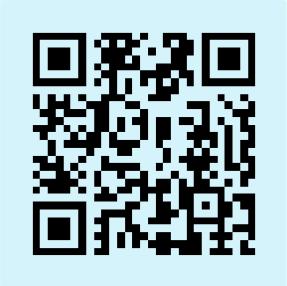
Yoga helps kids focus: Fun for the whole class Self awareness through journaling: Checking thoughts Emotional intelligence: Manage emotions by taking a pause and developing a feelings vocab. Social interaction skill: Finding common ground

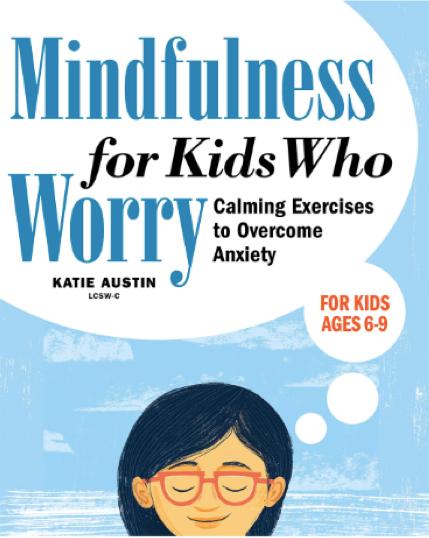

THE PATH FORWARD IN EDUCATION
Yoga Easy
The
Path Forward in Education

Letter From the Editorial Director
THE OTHER DAY a question popped up on my media feed, “What’s the one thing you love most about yourself?” As I sipped my morning coffee, I actually considered the question and gave it my full attention. The answer seemed to flow into my mind instantly - It was … my ability to learn. Interestingly, I did not always see myself as someone who learned things quickly. All throughout my school years, I never even thought I was intelligent. But today, although the trepidation and fear of failure definitely creeps in, or my tendency, in particular, to bury myself in the learning while neglecting my other needs, like most of us, I find that discovering something about myself is highly rewarding. In fact, finally grasping an elusive concept, or developing a new skill set is an inspirational adventure. Through research, I now know that as human beings, our innate evolutionary journey is to grow through the learning process.
As a teacher and parent for over 30 years, the one thing that I would like to share with our young children, on this path forward, is a lifelong love of learning. This involves removing the obstacles that are in the way of being open and receptive to the world around us. It means teaching children to question some of their thought patterns, to acknowledge and to welcome their emotional states and to witness their own sensory perceptions and reactions to internal and external input. It’s not about learning how to be more mindful or present, but rather how to stop blocking our innate conscious awareness. We are, in fact, already aware, open, curious and spiritual beings - that is our natural state; we are born that way. Young children are like flowing water in a stream of consciousness. Somewhere along the way the stream develops blockages, like fallen branches and debris.
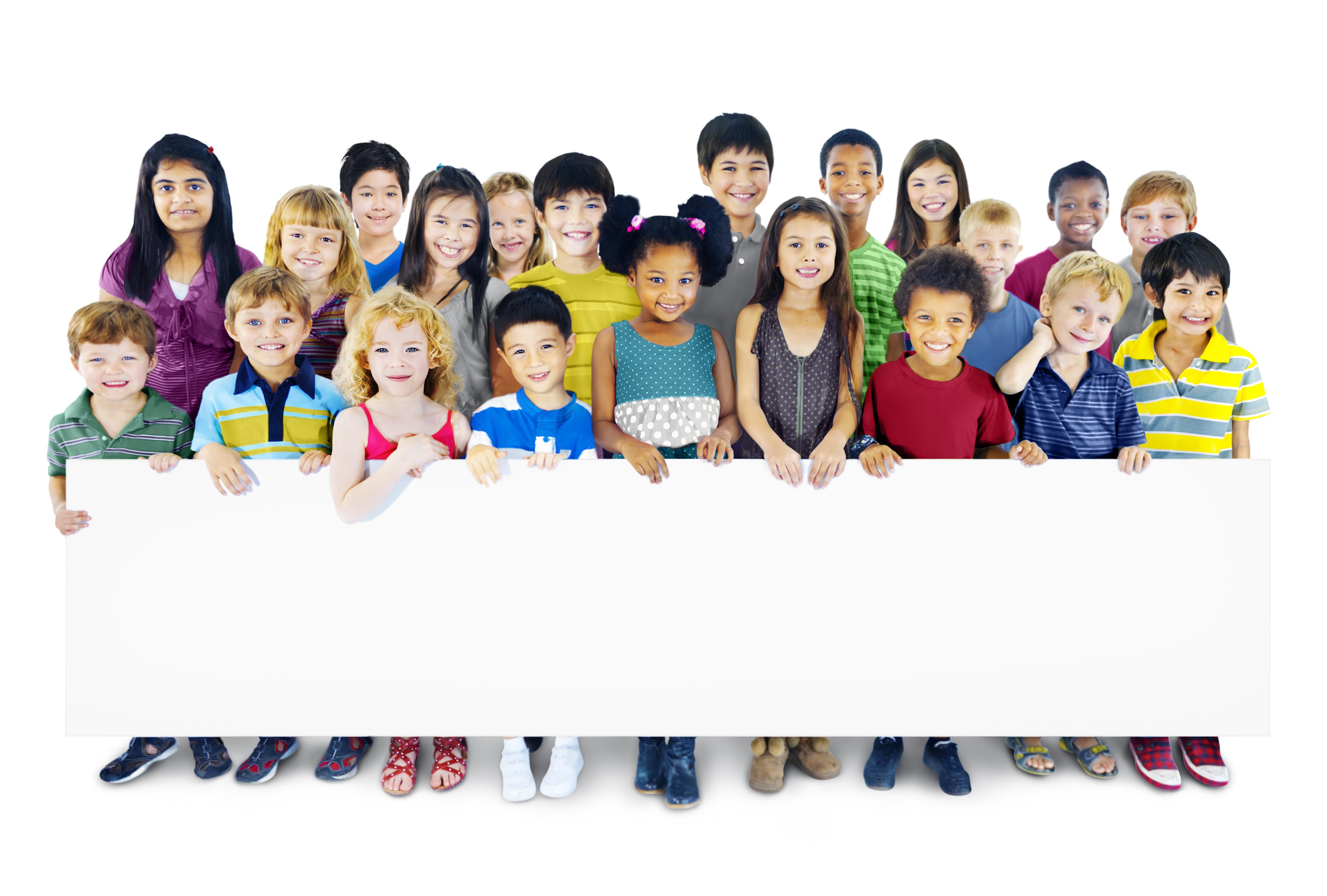
2
We need to teach children exactly how to remove those obstacles and return to their natural state of mindful presence. That river, of creative energy, that flows through every human being, can be reclaimed through the smallest shift in awareness. That shift must begin with the primary caregivers, parents, teachers, school administrators and coaches. What is most important, as caring adults in the lives of young children, is to model for them a daily practice of conscious awareness and mindful presence in our own lives, especially in our homes, classrooms and school communities.
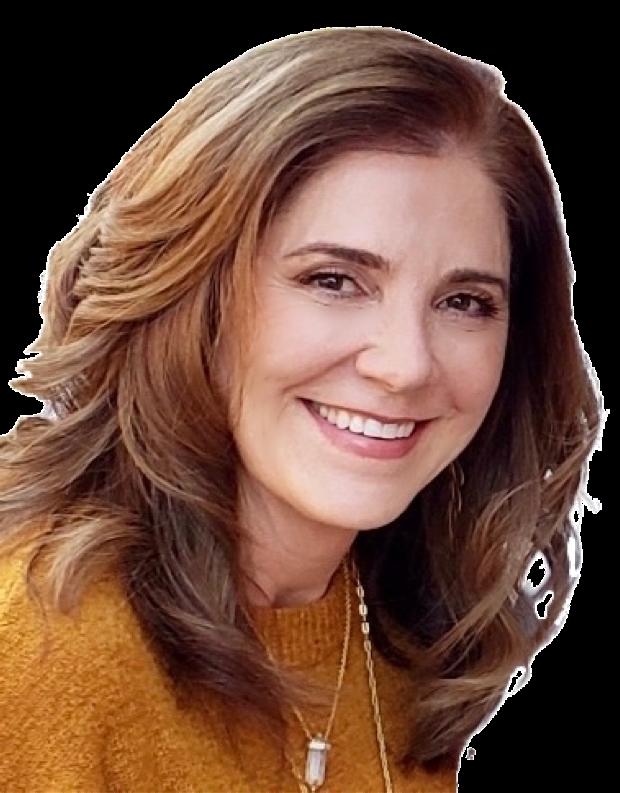
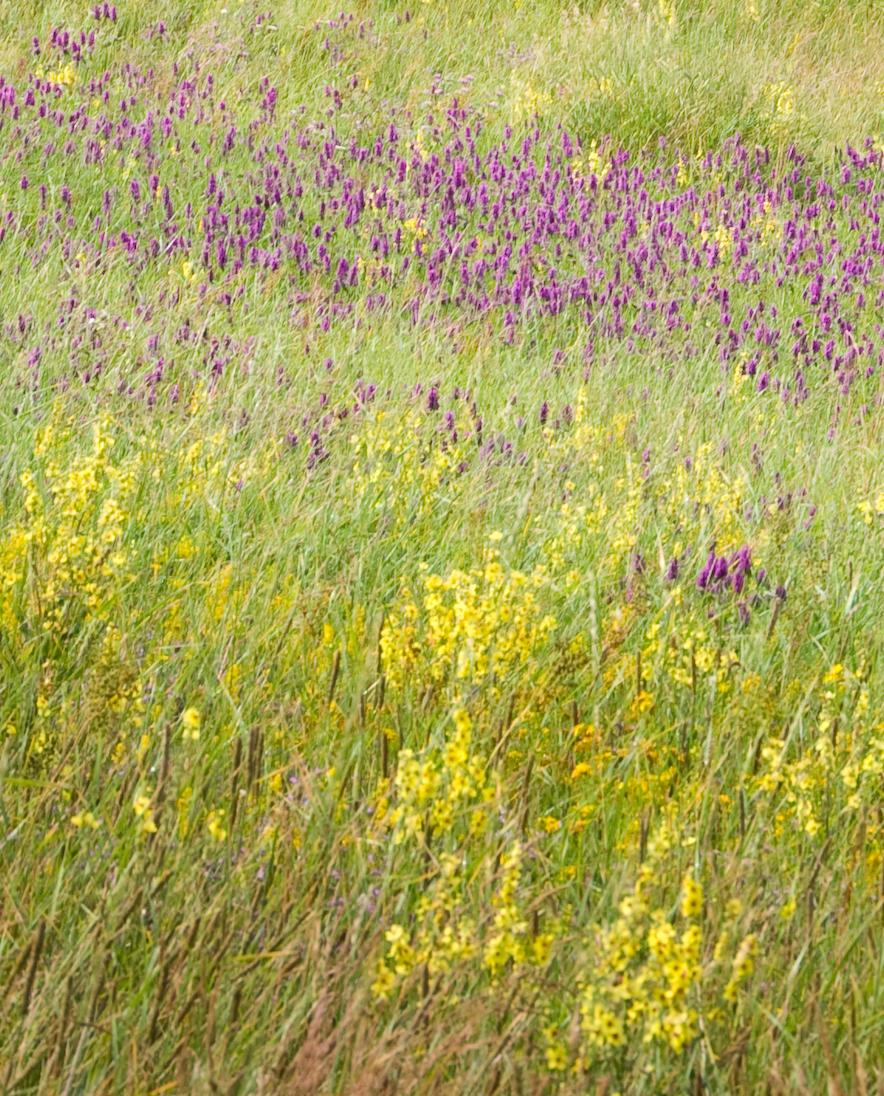

“The Conscious Childhood” is a publication with tools to help adults guide children back to their natural state of awe and presence so that their minds can be free to explore and learn without the burden of anxiety, fear and negativity that hijack their young impressionable minds and interrupt their natural learning processes. The content is especially designed for classroom and homeschooling educators, who are navigating through an already demanding work load of expectations, learning outcomes, and fully packed daily schedules. These foundational elements of a mindful and conscious education are designed to seamlessly integrate into existing academic curriculums so that teachers, parents and students can navigate through Social and Emotional Learning, Critical Thinking, Executive Functioning, and Cognitive Engagement with the foundation of having a deep sense of self, a clear active awareness and as best selling author, Michael Singer, calls it, a mind that can be a great gift. The science and data behind the effectiveness of incorporating mindfulness into existing daily activities is solid. Parents and teachers alike report a “flow” at home and in the classroom, a remarkable increase in positive social interactions, responsible behaviors, focused attention, creative problem solving and learning engagement.

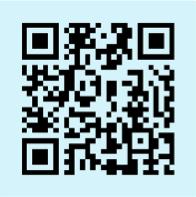
 Mary Doherty is a veteran teacher for over 20 years. She is a writer of academic lesson planning, SEL and mindfulness curriculum for a new generation of school children
Mary Doherty is a veteran teacher for over 20 years. She is a writer of academic lesson planning, SEL and mindfulness curriculum for a new generation of school children
3 Visit our website for more content: https://www.consciouschildhood.org © Conscious Childhood 2023
“Perhaps, the best case for this conscious shift in teaching children is the opportunity for everyone involved to feel the joy of connection it brings to our authentic selves, to each other and the world that surrounds us.”
The Path Forward in Education
Editor’s Note: A major shift in the purpose and intention in teaching
What’s it all about? THE BASICS
Mindfulness, awareness, presence, consciousness
Essential Mindful Toolbox
Curated reading books, games, activities and lessons
Teaching Children Mindfulness
Easy 5 minute mindful practices to do anywhere at anytime

Easy Yoga for All Ages
How yoga helps kids focus and develop body awareness

Journaling for Life
Ramp up your language arts program now
Taking time out for reflection reaps huge rewards in student self awareness while improving daily writing skills
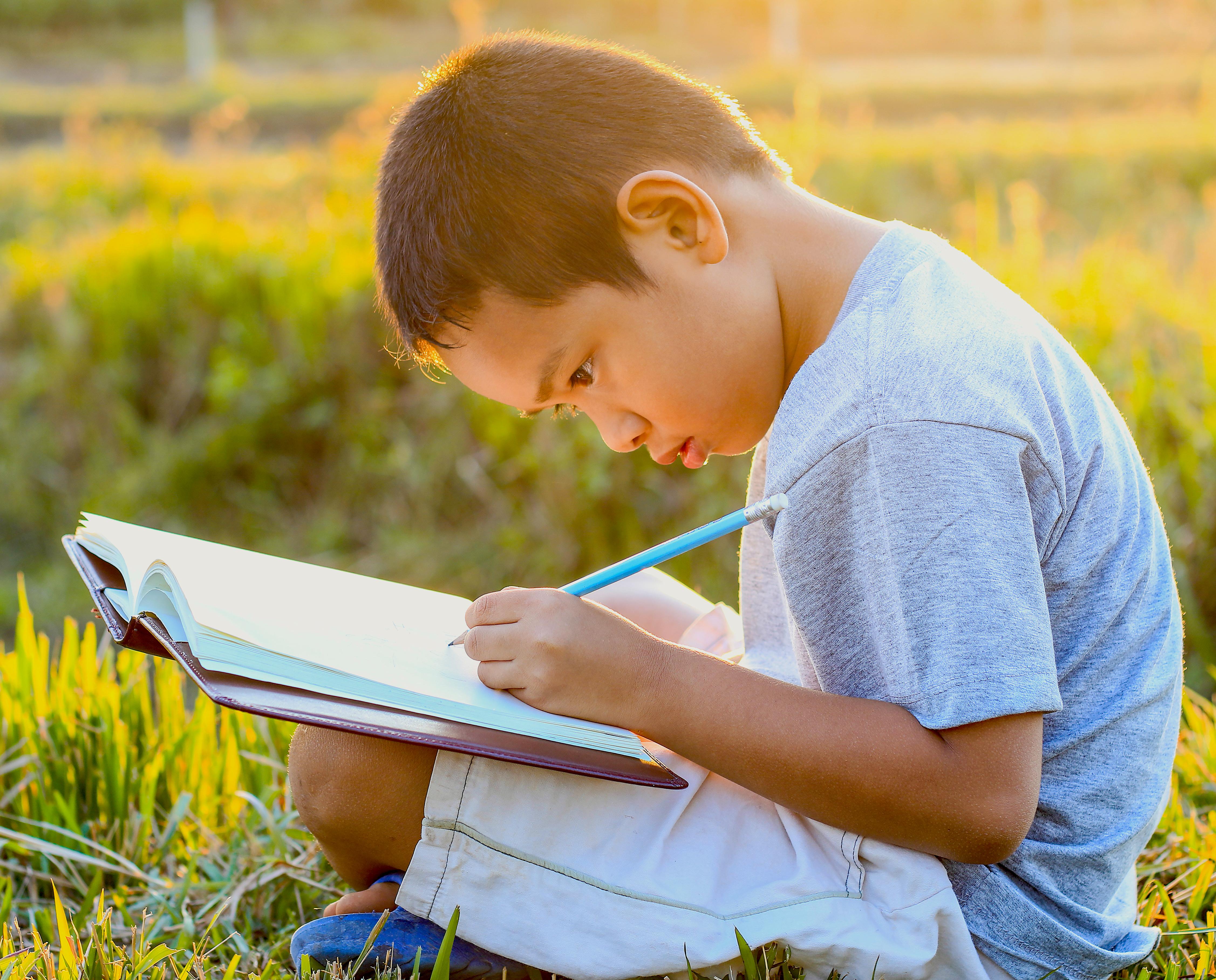
Emotional Intelligence
The Cornerstone for Social Emotional Learning
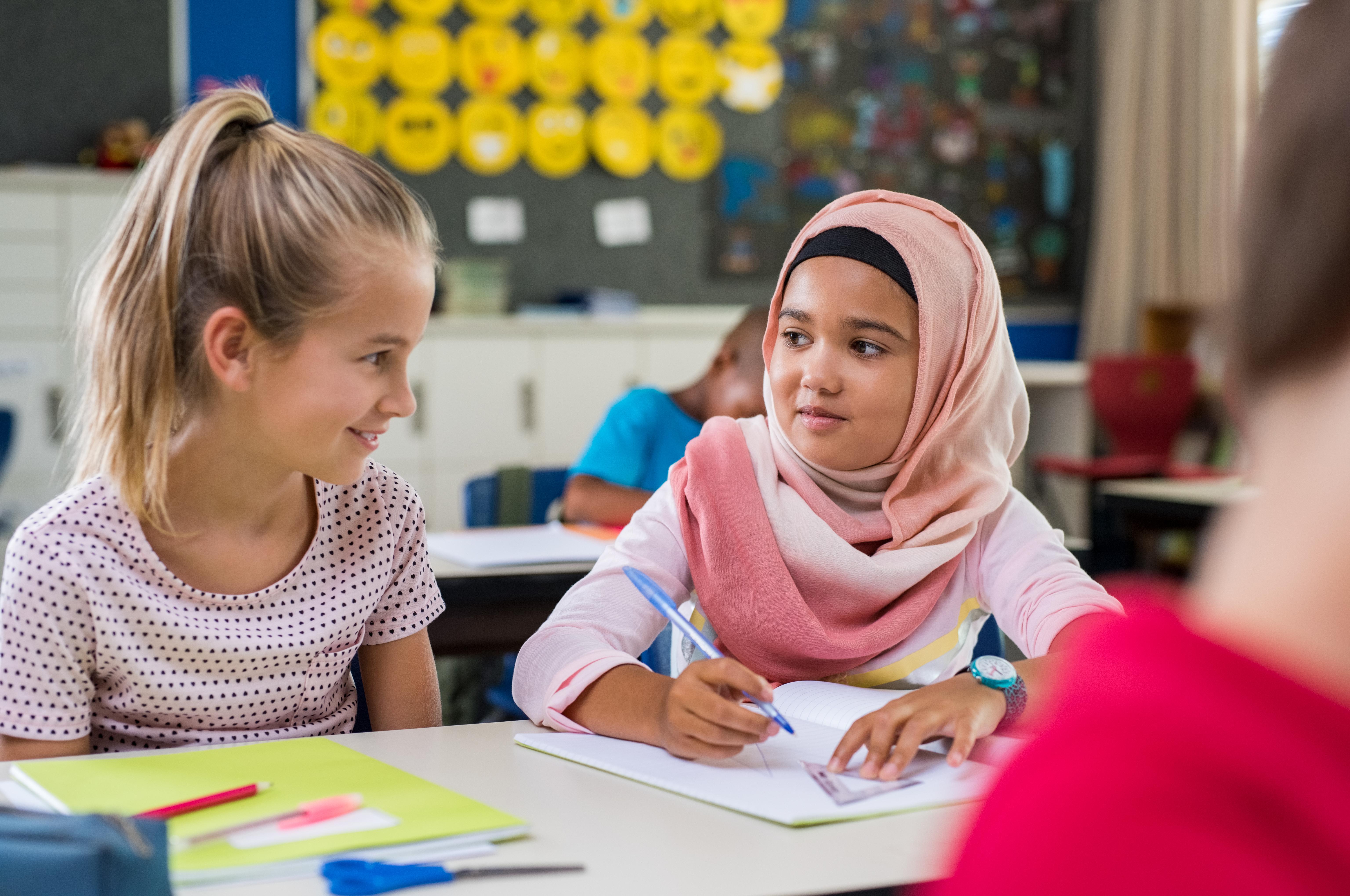
Feelings Word Web
Developing a child’s vocabulary for emotions
Take a Pause
STOP – WAIT – GO
Teaching your impulsive kiddos how to make a space between what they are feeling and how they react
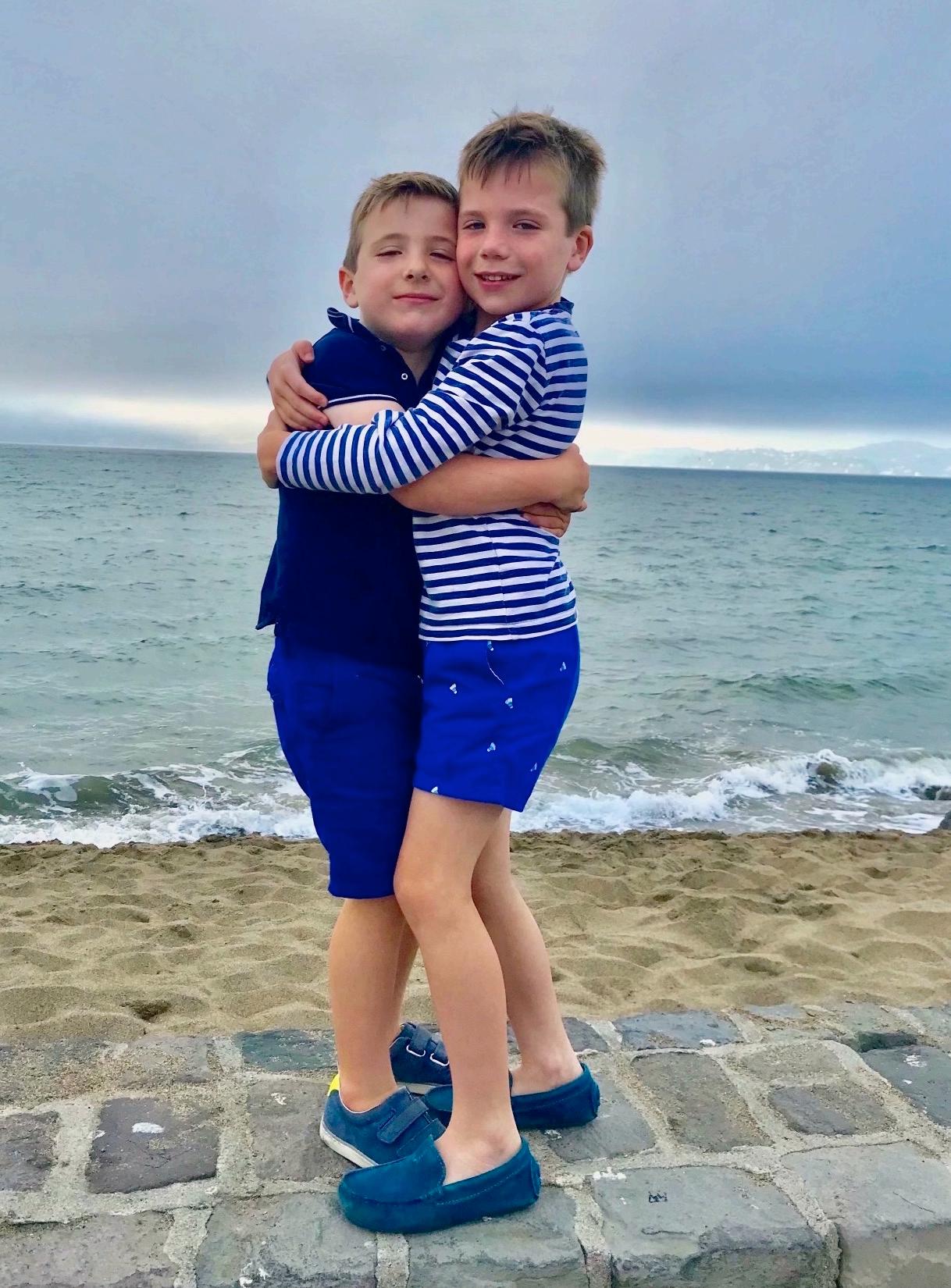
Finding Common Ground
Children may be really surprised when they embark upon a guided treasure hunt to find out how much they have in common with classmates whom they don’t know very well
Bulletin Board to Support Outcomes
More than a feeling. Engage children by taking expressive photos
Framework & Learning Outcomes
Conscious Childhood Goals / CASEL 5 Core Competencies
Just for the Teachers & Parents
PAGE 2
PAGE 5
Resources PAGE 9
PAGE 14
PAGE 19
PAGE 23
PAGE 28
PAGE 31
PAGE 34
PAGE 36
PAGE 41
PAGE 43
Resources PAGE 42
Modeling a daily practice for conscious awareness and mindful presence in our homes, schools & communities
Contents THE PATH FORWARD IN EDUCATION
4
Mindfulness, Awareness, Presence, Consciousness, What’s it all about?
I have great compassion for educators. In all my experience in teaching, I felt like school administrators were consistently presenting us with new pedagogy year after year. So, first, I want to thank you for taking this life changing opportunity to help your students grow and learn more consciously. This is not a program to revamp the existing academic curriculum, but rather, simple easy tools and a shift in “how” and “why” you convey your content. The benefit: your classroom will flow and your students will thrive.
At some point, I’m sure you have heard mindfulness terminology popping up in the educational sector; but lets break down the concepts so that we can get you personally prepared to take your children on this journey with you. Let’s get started with the basics:

Mindfulness is about being fully present in the “here and now” and bringing your full attention to your internal and external environment. There are many activities, such as breathing techniques, body awareness scans, and meditation that facilitate your ability to let go of distractions and come back to the present moment in front of you. Mindfulness is a state of being, not doing. Yoga postures and movements, for example, are practices that bring you into a state of mindfulness .
Awareness in simple terms means having knowledge or perception of a situation or object. But in a deeper sense, practicing awareness means you can notice what is capturing your attention. Then you move that attention toward your thoughts, emotions, and your body, by observing them without choosing to react to them. You just sit with everything and just be still for a while.
See Mindfulness Activities for Your Class Page 14 - 18
5
When you are mindful, you are cultivating your awareness toward accepting “what is” without reactivity.
According to Eckhart Tolle, best-selling author of A New Earth, ”the most important thing to develop in a child is awareness…so much more than anything like accumulating knowledge because that does not guarantee awareness whatsoever.”
Presence is the practice of noticing, observing and then bringing your awareness back to the present moment. This is what author and teacher, Ram Dass, refers to as “Be Here Now”.
Consciousness is your natural state of being. Even when you are sleeping, you are conscious. Your consciousness is the being inside of you who is the perceiver, and observer of your thoughts, emotions, likes, dislikes etc.. Your consciousness has nothing to do with your roles in life, your possessions, your history, your physical appearance, or even your personality. You get into trouble when you wrap up your entire identity around external and internal perceptions of yourself and others. Many spiritual teachers call this false identity as the “Ego Mind” or the “Masquerading Self”. Consciousness is the part of you that
See Classroom Resources to Promote Mindfulness in Your Class Page 9 - 11

..the most important thing to develop in a child is awareness, so much more than anything like accumulating knowledge “
- Eckhart Tolle
“
6
has always been there, regardless of how your personality or life situation changes. You are the one inside who is aware and noticing. Spiritual masters call it “The Deep I”, while religions may identify it as your Soul, or Spirit.
In a modern secular practice, mindfulness considers exactly what the consciousness pays attention to. Many people are missing the experiences of their lives because they are so distracted by and involved in their thoughts and feelings that they are disengaged in the reality that is unfolding right in front of them. When you make a “conscious choice” or practice “witness consciousness”, you are full aware and present right now.
Your mind is simply a tool in your body. But at times, your thoughts may have a way of taking over your identity. They may start with a comment about something that bothers you and in a very short time, your mind will turn it into a story about all the things that disturb you or all the people who annoy you. Soon you may be feeling spent and defeated. For many people, including children, emotions begin to feel uncontrollable. Thoughts seem to take on a life of their own filling the mind with anxiety, worse case scenarios and sadness about past experiences. You may find

-
“
Personal Growth Resources For Teachers & Parents Page 42 7
Be here now.”
Ram Dass
See
yourself starting to ruminate about what happened to you, what might happen to you, and a whole slew of speculations and judgements about other people. It gets a little crazy in there. In fact, author, Michael Singer, compares most thoughts to a car that is driving down the freeway with nobody at the wheel. In The Untethered Soul, selling over a million copies worldwide, Singer states, ”The mind can be a dangerous place, or a great gift.” I think if everyone gave this some consideration, it could really resonate with many people.
You take a huge step toward a more “conscious life” when you realize that you can absolutely gain some control over these thought streams. In fact, you actually affect change in your current life situations with better choices and decisions. You are in the driver seat of your own mind when you are aware of your thoughts, without the need to judge or add another “story” to them. Practicing mindfulness does not mean that you don’t

reflect on the past to enjoy a memory or, perhaps, learn from a mistake; and it certainly does not mean that you don’t continue to make plans and set goals for yourself. Mindfulness centers around intention, the “why” behind choices: ”What is my intention here?” You may begin to notice that right action seems to flow naturally when you are operating from a place of mindful consciousness.
Your children’s young minds are developing at a rapid speed with some beautiful knowledge, experiences and memories. But I’m sure you also want them to embrace challenges with optimism and a growth mindset. This is what I refer to as “The Conscious Childhood”. So, teaching children how to become less distracted by external and internal stimuli allows them the opportunity to truly open up to their unfolding world. By bringing children back to their natural state of awareness, they can either choose to apply better problem -solving strategies or, in many cases, just let go of unimportant disturbances or distractions and allow thoughts to simply pass through them. Most importantly, children will cultivate self-awareness, enjoy their childhood and thrive in their families, schools and communities.


The mind can be a dangerous place, or a great gift.”
-Michael Singer
“ See Journaling
for
8 Visit our website for more content: https://www.consciouschildhood.org © Conscious Childhood 2023
Activities
Your Class Page 23 - 27
Toolbox
Here is a collection of some of my favorite games, stories and activities for children of all ages. The selection has been curated to include only simple, easy-to -use exercises that are engaging and fun.
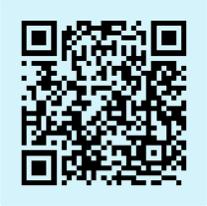
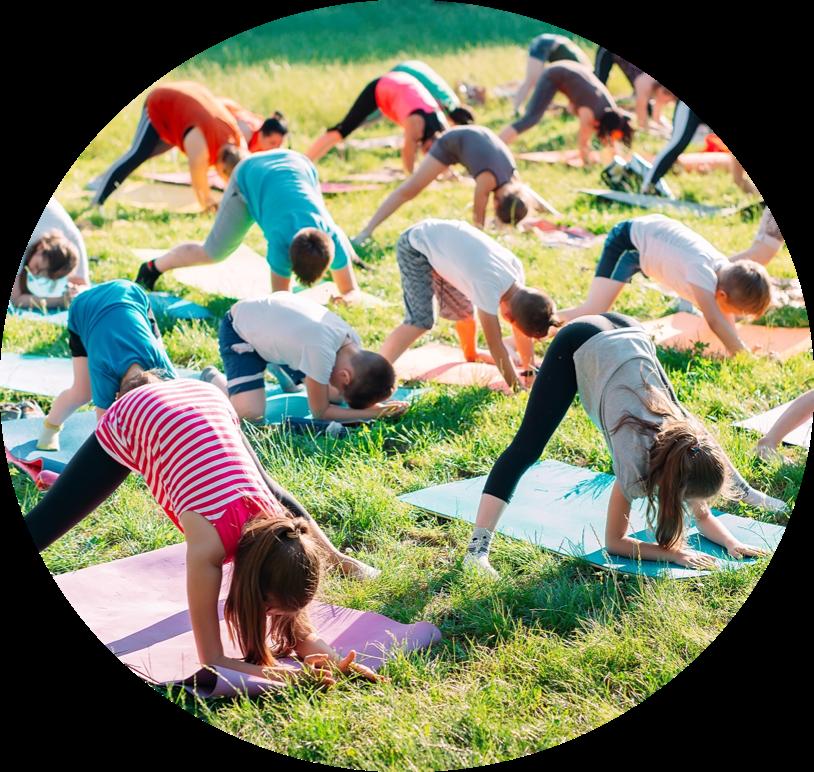
You can start with just a simple practice every day, but don’t be surprised if your children start asking you for more!
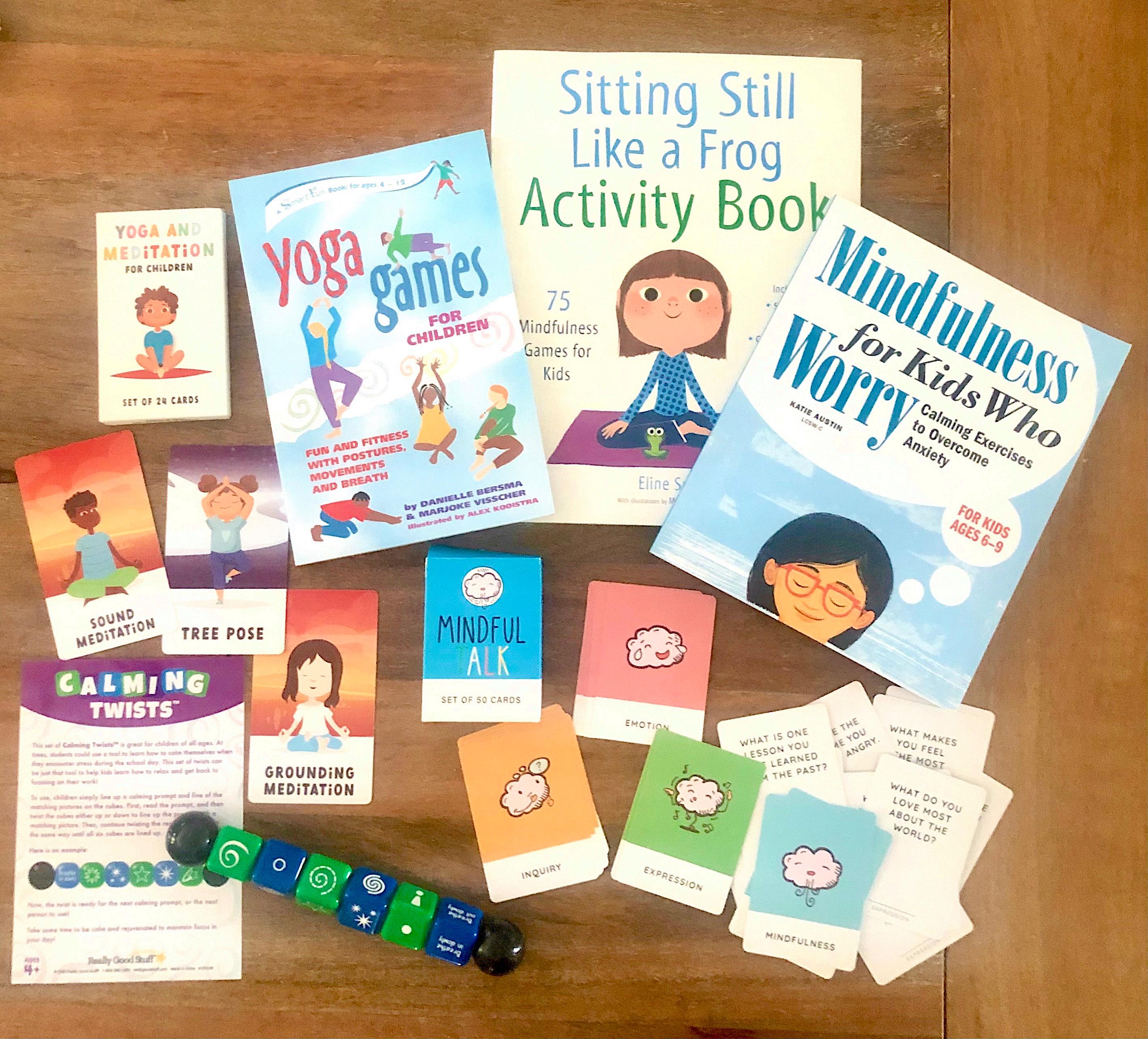
The 9 Mindful Click on Our Website Visit our website for more content: https://www.consciouschildhood.org FOR A FULL DESCRIPTION WITH BUYING OPTIONS © Conscious Childhood 2023
Aloud Books
Grades K-2
Grades K-2
Grades K-2
MY BREATH LOVES ME $11.00
By Claire E Hallinan
I AM: Why Two Little Words Mean So Much $13.00
By Dr. Wayne W. Dyer with Kristina Tracy
BREATHING MAKES IT BETTER: A Book for Sad Days, Mad Days, Glad Days, and All the Feelings In-Between $12.00
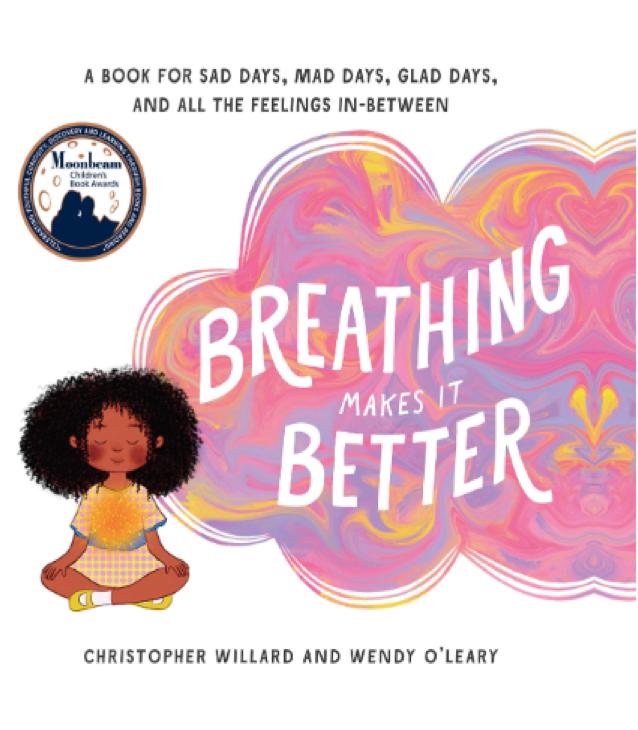 by Christopher Willard and Wendy O’Leary
by Christopher Willard and Wendy O’Leary
This Read Aloud is an engaging and interactive story to teach young children how to navigate through their powerful emotions by discovering the power of their breath.
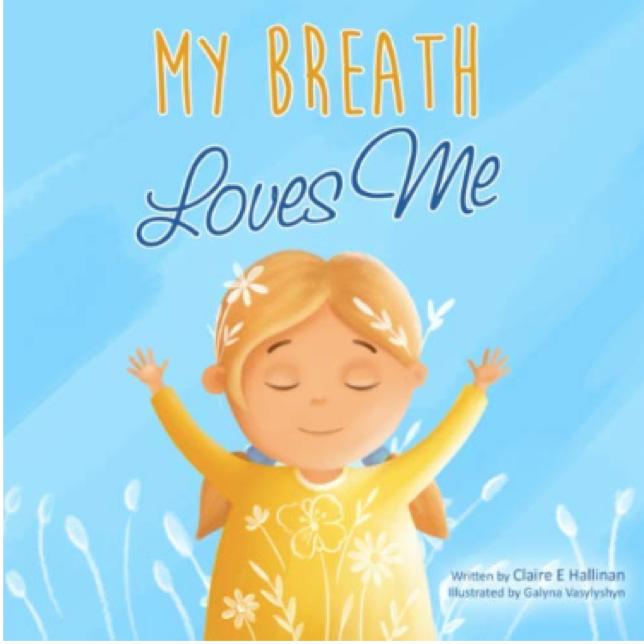
Grades K-2
This Read Aloud book demonstrates how sometimes children need a little help navigating difficult social challenges (i.e. when I child feels left out) by using the breath, pause, notice and respond sequence. Tip: Take a little time to review the vocabulary with the kids before reading.
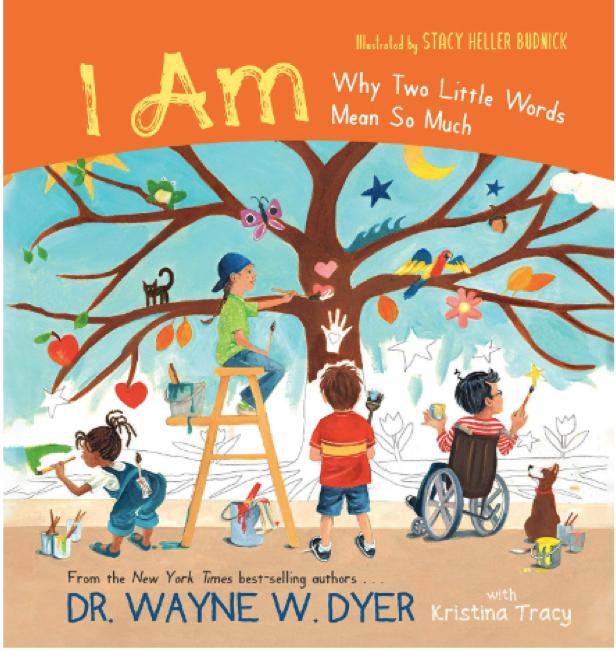
Activity & Workbooks
This Read Aloud or a Early Reader for 1st & 2nd Grade. is a beautiful story explaining to young children the divinity in all things; God is not separate from us, but within us all. I highly recommend this for modern religious schools that embrace the idea that God is life giving, loving, nonthreatening and relatable. .
Grades K-4
MINDFUL MOVES: Kid –Friendly Yoga and Peaceful Activities for a Happy, Healthy You. $13.00
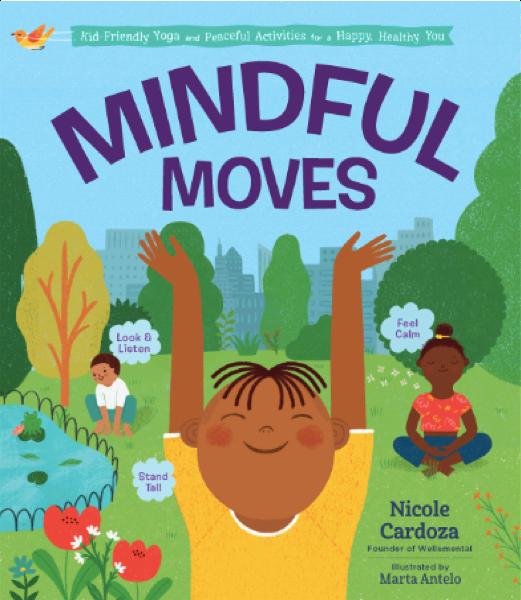 by Nicole Cardoza
by Nicole Cardoza
This Read Aloud or a Early Reader for 1st & 2nd Grade. This includes fun easy activities for home and school that are beautifully explained with illustration.
Grades K-6

MINDFULNESS FOR KIDS WHO WORRY:
Calming Exercises to Overcome
Anxiety $8.00
by Katie Austin, LCSW-C
This amazing book has relatable stories with corresponding mindfulness exercises, an interactive activity and then a wonderful wrap up section to bring it all together.
SITTING STILL LIKE A FROG ACTIVITY
BOOK: Mindfulness Exercises for Kids $18.00
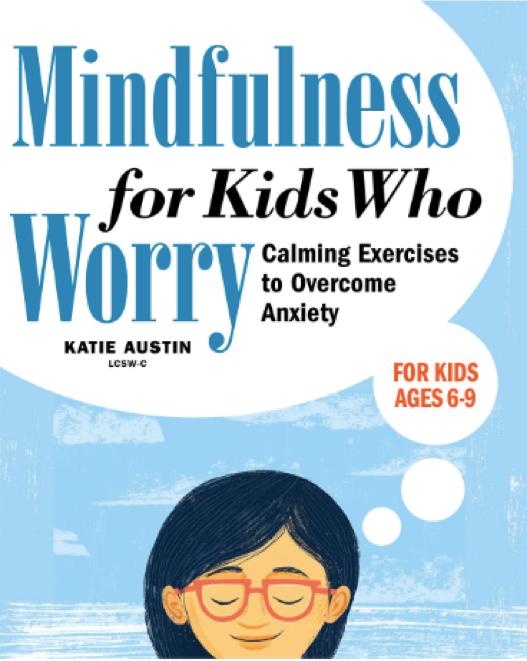
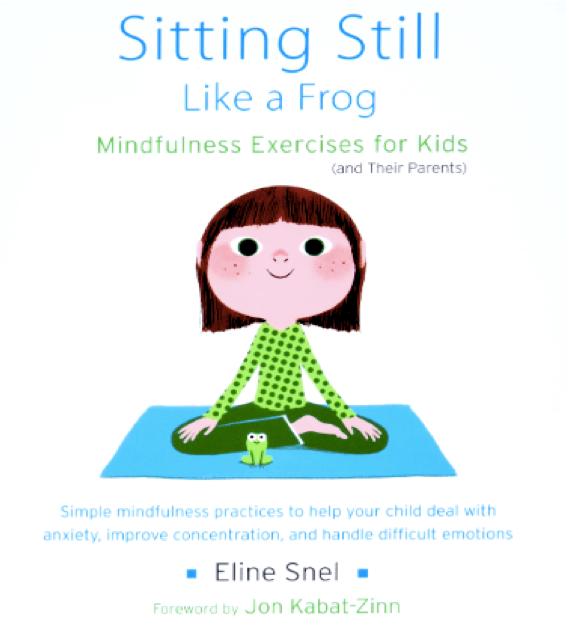
by Eline Snell
Narrated by a cute frog, this book incudes simple and accessible mindfulness meditations. The format is great for homeschooled children but can be easily adapted for the classroom. This is part of a collection of Sitting Still Like a Frog books and audio meditations.
Religious
10
Visit our website for more content: https://www.consciouschildhood.org FOR A FULL DESCRIPTION WITH BUYING OPTIONS Click on Our Website © Conscious Childhood 2023
Read
Games for All Ages
Grades K-8
Grades K-3
Grades K-3 For Pet Lovers Of All Ages

YOGA GAMES FOR CHILDREN
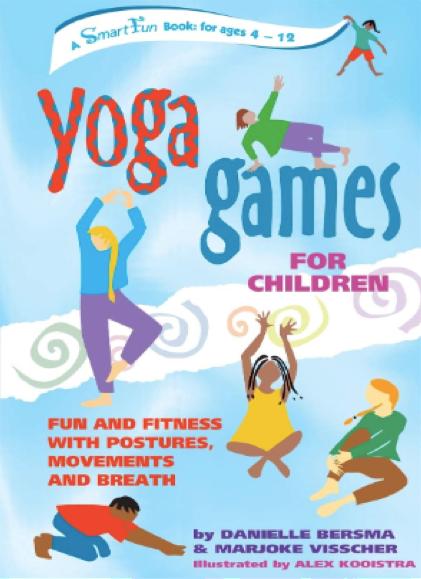
$15.00
By Danielle Bersma & Marjoke Visscher
These authors have a clear understanding of child development. Specific games are offered for children in three age groups and various time options. A winner!
YOGA AND MEDITATION: For Children $14.00
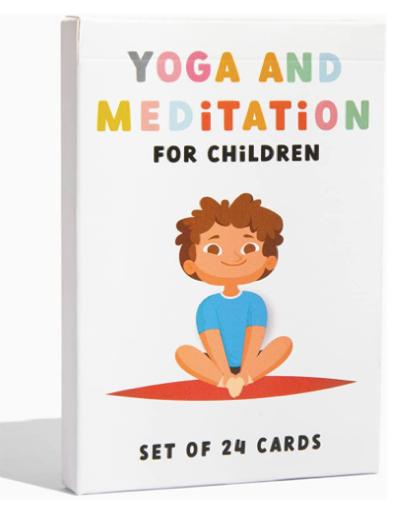
Brand: School of Mindful This deck of 24 cards will give beginners a picture and easy to follow steps for Yoga Poses, Stretches & Meditations.
THE MONKEY MIND: 30 Fun Ways for Kids to Chill Out, Tune In and Open Up. $17.00
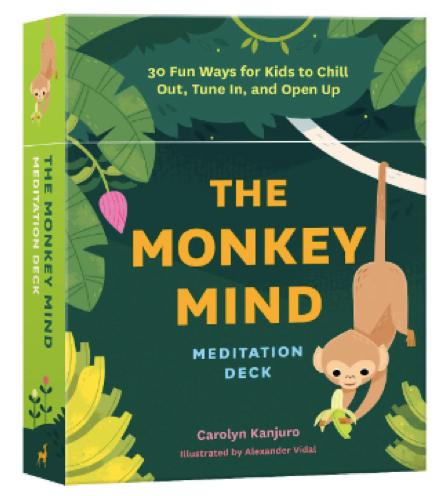 By Carolyn Kanjuro
By Carolyn Kanjuro
This deck of 30 playful cards will help young children navigate through difficult emotions with a variety of fun activities. A handy instruction guide helps parents and teachers find easy ways to bring this into every day curriculum.
Books for Older Kids
Grades 5-10
Grades 6-12
Grades 6-12
GUARDIANS OF BEING: Spiritual Teachings from Our Dogs and Cats $12.00 words by Eckhart Tolle art by Patrick McDonald
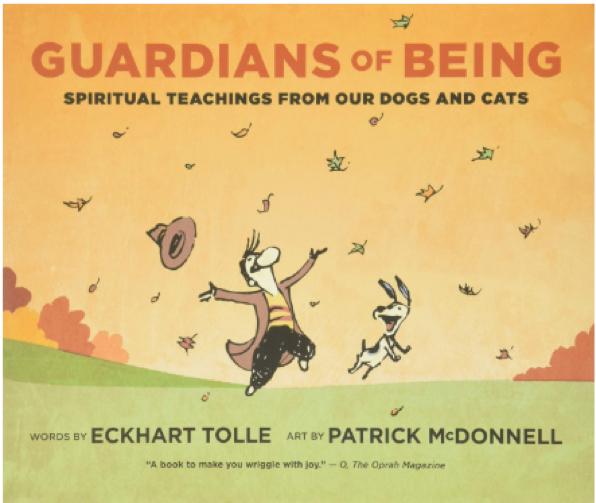
This absolutely delightful collaboration is witty and inspiring. Everyone who has ever loved a cat or dog will relate to the innate wisdom that a beloved pet can teach us about “being”.
Tip: If your classroom has an overhead projector, a few pages a day can be shared with the whole class to start the day off with positivity and joyful laughter.
MINDFULNESS, MEDITATION FOR TEENS & PRETEENS: A Practical Guide with Examples, Meditations and Tips $16.00
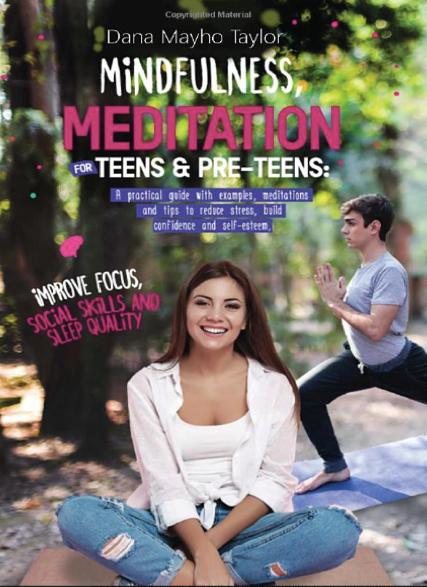 by Dana Mayho Taylor
by Dana Mayho Taylor
This guide is an excellent self-read for kids ages 10 and up, however I highly recommend parents and teachers incorporate these great tools for building self-esteem and confidence in their own homes and classrooms.
MINDFULNESS FOR TEENS IN 10 MINUTES A DAY: Exercises To Feel Calm, Stay Focused & Be You Best Self $11.00
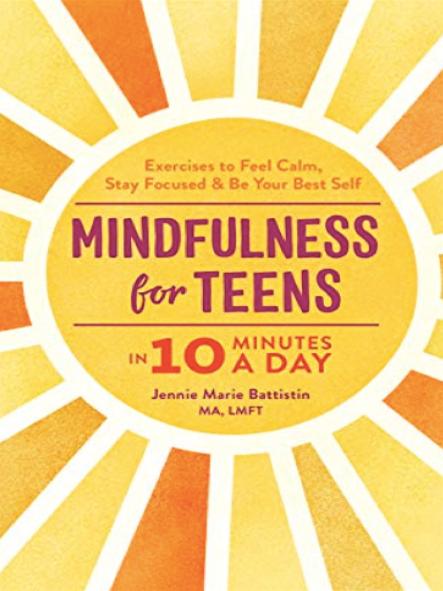 by Jennie Marie Battistin MA LMFT
by Jennie Marie Battistin MA LMFT
60 exercises that are designed for mornings, midday and night. There are four types of mindfulness practices including calming, focusing, reconnecting and responding.
5-MINUTE MINDFULNESS MEDITATIONS FOR TEENS: $11.00
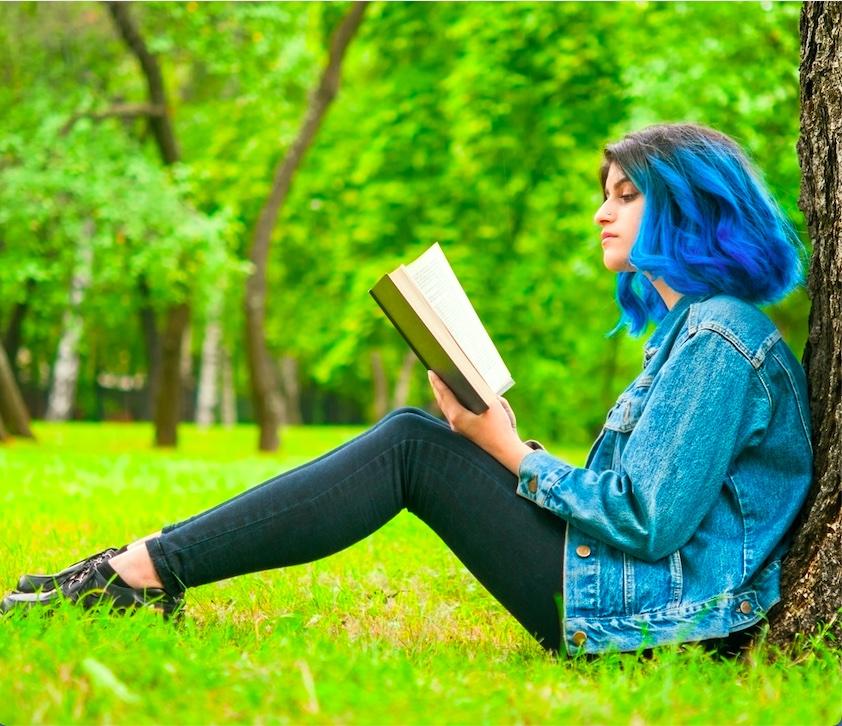
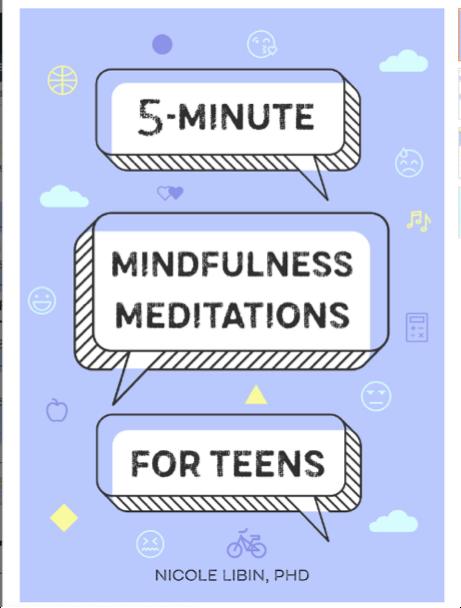 by Nicole Libon PhD
by Nicole Libon PhD
This guide begins with some foundational mindful practices and then offers teen relevant meditations for school life, everyday life, self care, friends and family. This book is full of fun facts and tips for the beginner and offers additional practices “to take it further”.
Editor’s Pick for Best Gift Book
11 Visit our website for more content: https://www.consciouschildhood.org Click on Our Website FOR A FULL DESCRIPTION WITH BUYING OPTIONS © Conscious Childhood 2023
Dear Parents,
YOU ARE EVERYDAY HEROES because you are bringing into this world a light of consciousness in the form of your young child. As a single parent raising two children on my own, and in later years, co -parenting three step -children, I know that this can be the most challenging “job” you will ever have. But, always remember, children come into your life as a divine gift. As your child’s “first teacher” you have the privilege of sharing a vision of goodness in the world through your own awareness and conscious presence. In return, your child, will become your greatest teacher.
All five of my children are now adults. As I reflect now on my own parenting, of course, I can see so many areas for growth, but what I have come to realize is that even the smallest, seemingly “insignificant”, moments of focused attention and presence, were the most impactful in developing a bond of trust, safety and connection.
Partnering with your child’s teacher in mindfulness practices will offer incredible benefits for your child and family. The mindfulness lessons and exercises in this resource can easily be adapted to practice at home . Also, consider volunteering to lead a mindfulness exercise in your child’s classroom . As a 20 year veteran teacher, I loved inviting parents into my classroom to share their gifts and talents with the students. Even better, your own child will delight in the impact your presence will have on the classroom culture.

Thank you for taking this journey with your child. I wish you a peaceful, calm and loving experience. Please reach out to us to find new lessons every month. We welcome your questions and feedback as we continue to grow this community of mindful parents.

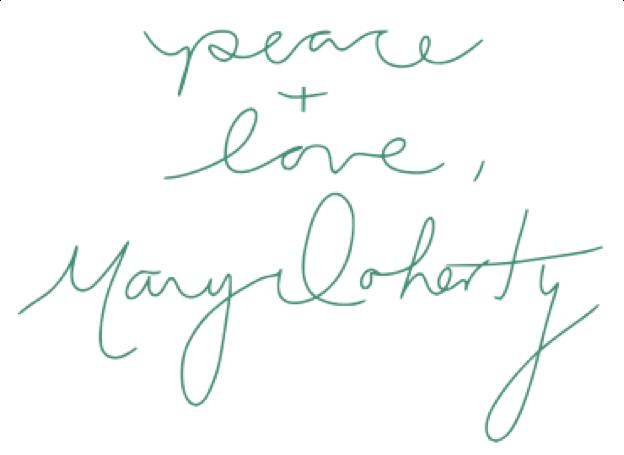

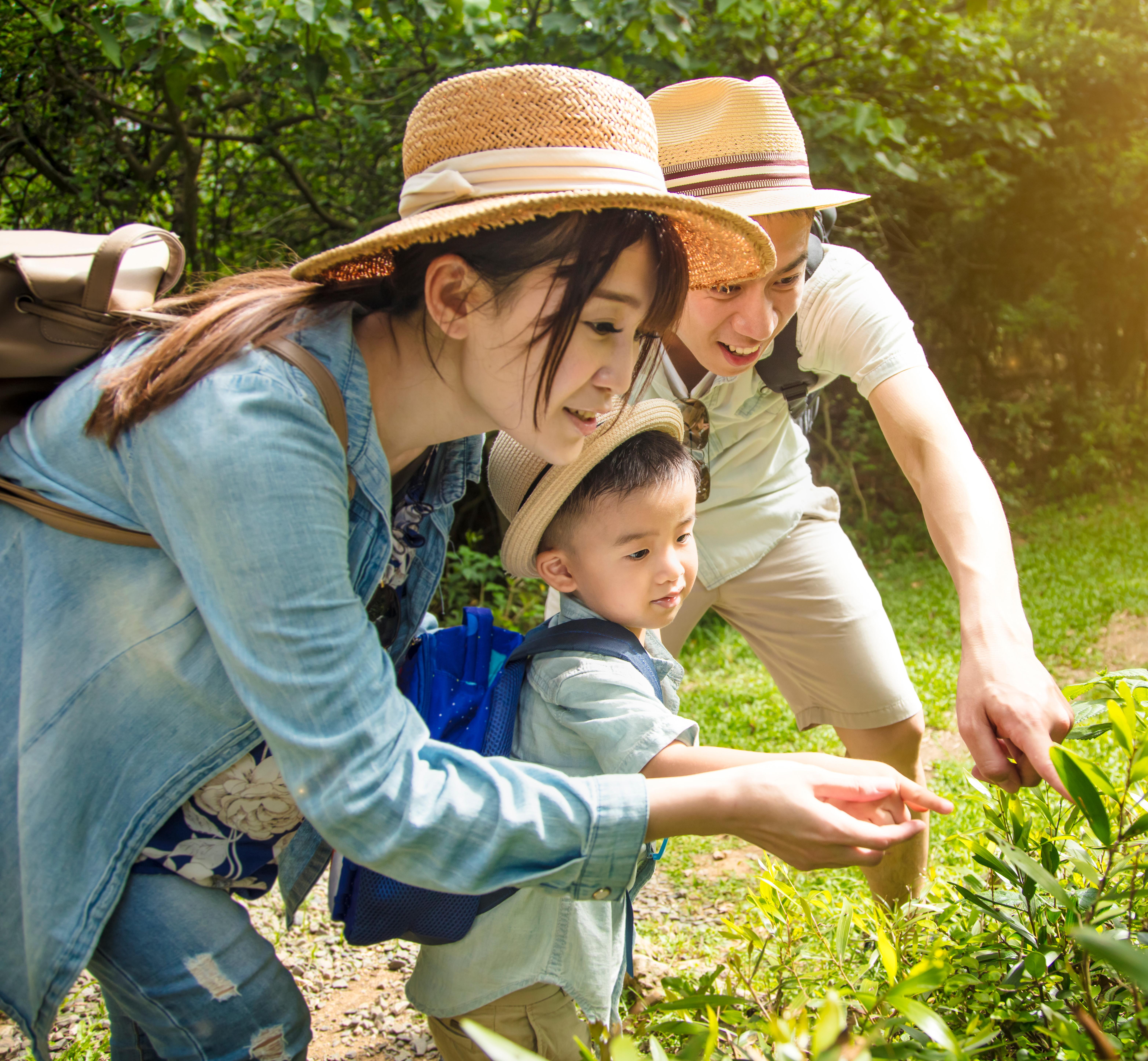
Letter to Parents 12
Visit our website for more content: https://www.consciouschildhood.org © Conscious Childhood 2023
Letter to Teachers


Dear Teachers,
MY FONDEST MEMORY OF TEACHING was when, on an impulse, I just knew the right place to continue the lesson was outside under the one -hundred year old oak trees on a bright spring day. Contrary to “old school beliefs”, the children were not going to become “unruly” but rather, deeply engaged and at home in their rightful place to breathe in fresh air, take in the textures of the landscape and smell the fragrance of trees.

When something was just “off” in the classroom and I could feel my own anxiety start to rise, just a change of venue, some simple breathing practices, and a chance for stillness was all that we needed to re -group and refocus on a meaningful lesson. As if they were under a spell, their imaginations ran free. They could be journaling about their experience from a recent field trip, acting out character roles from a book we were reading, listening to a poem, or breaking into groups for a communication activity.
What I realized, over the years, is that children NEED to be outside. Rather than just considering outdoors as a recess break, or for a special occasion, I discovered that right here, in nature, we all have a great advantage over the competition for our children’s attention, such as devices, T.V., social media, and video games. Even when the weather was challenging, we could bundle up and walk around the campus on a tired afternoon to rev up motivation and engagement. Sometimes I asked each child to notice a unique color, smell, texture or sound. This alone would re -direct their attention to their senses, and away from their over-thinking, anxious “monkey brain”.
I wish you the very best experience in taking this journey with your students. Please reach out to us to find new lessons every month. We welcome your questions and feedback as we continue to grow this community of mindful teachers.

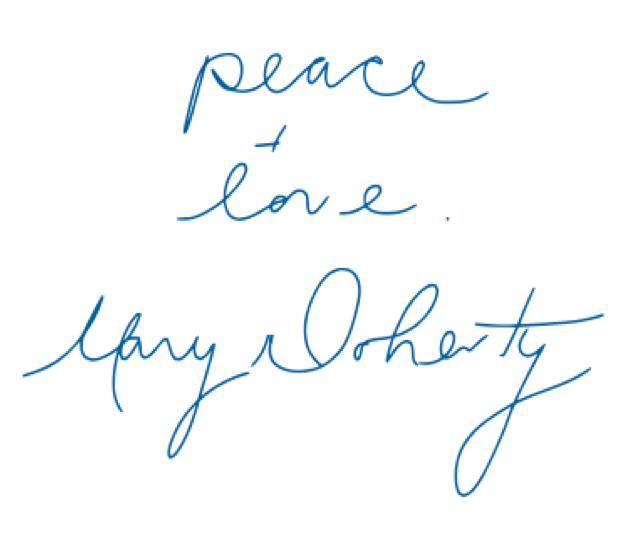
13
Visit our website for more content: https://www.consciouschildhood.org © Conscious Childhood 2023
Meditations
Daily Meditation:
How do breathing practices help kids reduce stress and redirect their focus away from distractions?

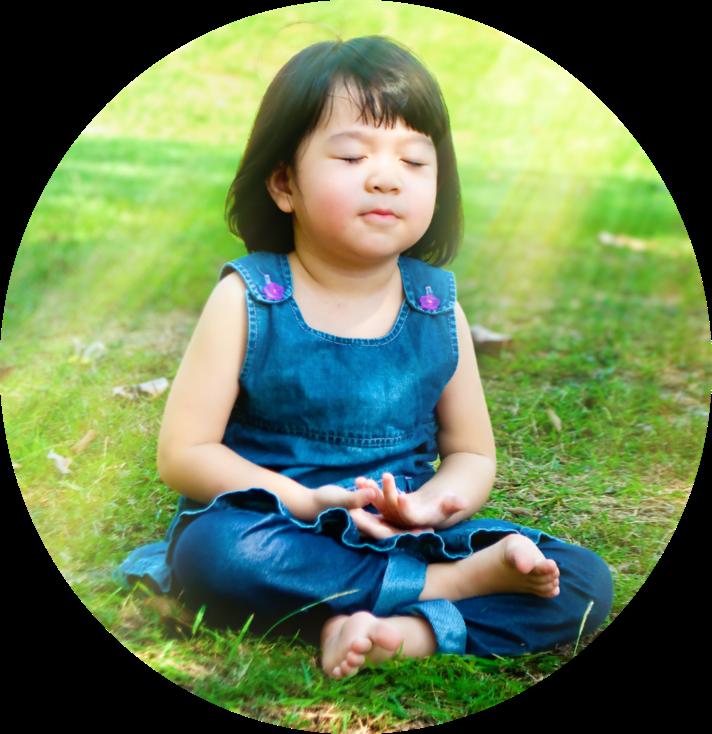
BREATHING MAKES IT BETTER: A Book for Sad Days, Mad Days, Glad Days, and All the Feelings InBetween by Christopher Willard and Wendy O’Leary
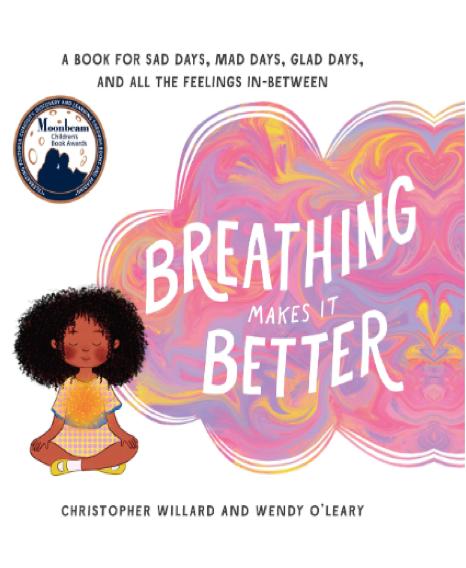
This Read Aloud is an engaging and interactive story to teach young children how to navigate through their powerful emotions by discovering the power of their breath.
The breath is an integral component of meditation practice; however, breathing practices can also be used alone, absolutely anywhere, as a form of mindful relaxation. When learning how to meditate, following the breath is an easy gateway into a mindfulness state of presence. This simple practice has numerous health advantages over time. Studies show that focused attention on the breath has a direct impact on how we feel. A regular meditation practice helps to lower anxiety and depression symptoms in children. In addition, the positive benefits include a boost in overall cognitive performance and memory retention. When your kiddos seem to be out of sorts, or having one of “those days”, where their attention seems to be either, all over the place, or gone for the afternoon, give one of these fun lessons a try.
5-MINUTE MINDFULNESS MEDITATIONS FOR TEENS: by Nicole
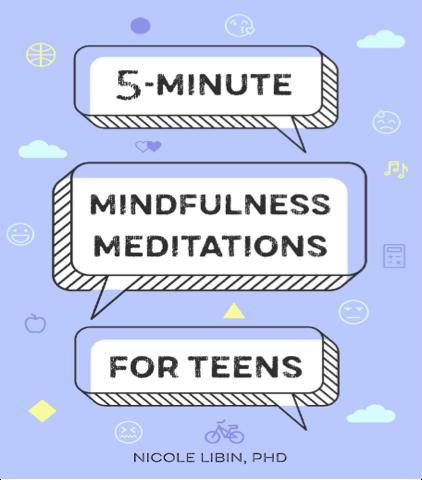 Libon PhD
Libon PhD
This guide begins with some foundational mindful practices and then offers teen relevant meditations for school life, everyday life, self care, friends and family. This can easily be adapted for younger children as well. This book is full of fun facts and tips for beginners of all ages.
“When your mind is racing, your heart is pounding, or you feel out of control or stressed out, focusing on the feeling of your breath can help you let go of things you can’t control right now, bringing you back to the present moment. It’s like a reset button for your mind” Nicole Libin, PhD
Click on our website below
for a full description & buying options
TIPS FOR SUCCESS:
1. Create a calm environment free from distractions. Consider taking the practice outside on a grassy lawn.
2. Maintain consistency through daily or regular practice sessions.
3. Remind children that there are no “wrong” ways to practice. If their minds wander during the practice, gently remind them to come back to the breath. Thoughts are OK and not to be judged as “bad” or “good”.
4. Praise their efforts and progress; encourage them to continue the practice at home..
https://www.consciouschildhood.org © Conscious Childhood 2023
min breath 5 Visit our website for more content:
Mindfulness
Part 1: Sense Perception Through Imagination
TEACHER / PARENT:
- Close your eyes and imagine holding in your hands a cup of something yummy like hot cocoa on a cool fall day.
-
I’m going to ask you some questions and I just want you to think of the answer in your own mind. We won’t share our answers until after we are finished. Ready?
- In your minds eye, what does the cup look like? (a mug, paper cup, etc..) What color is the cup? How does the cup feel? (warm, solid, etc..)
- How does the cup smell with that sweet chocolate inside?
Part 2: Breathing Practice
TEACHER / PARENT:
- Now I want all of you to keep your eyes closed and keep imagining the cup of hot cocoa. Slowly breathe in through your nose the delicious smell. Can you imagine the smell? Is it sweet? Is it chocolatey?
- Sometimes, hot cocoa can be too hot, and we need to cool it down. So, this time you are going to breathe in with your nose and then you are going to very gently and very slowly cool the hot chocolate by blowing through your lips. If we blow too hard we might splash the hot cocoa!
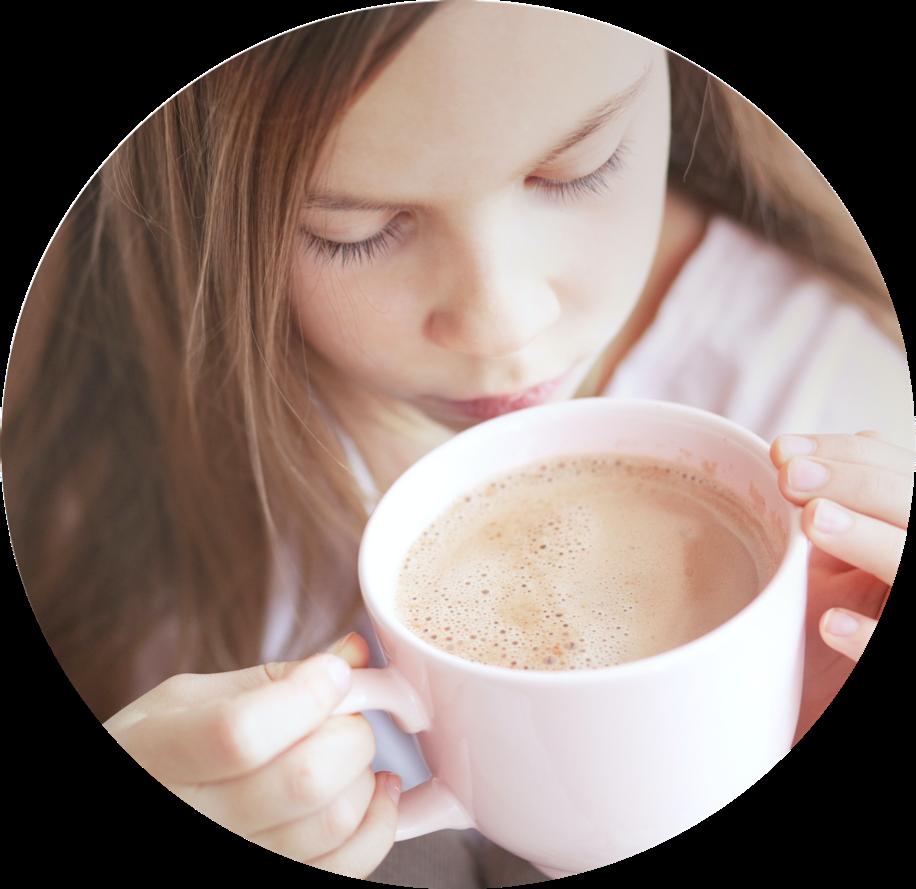
- So lets do it again:, but this time you will breathe in through your nose taking in all of that sweet smell; then your will breathe out gently through your lips taking enough time to cool it down.
- (Repeat practice two times)
Part 3: Sharing & Reflection

TEACHER / PARENT:

- Now open your eyes. How do you feel? Some of you may feel hungry for cocoa! But I see some smiles out there. Do you feel happy? (option to describe their cup and how it felt in their hands)
- Remember, you can do this at home, in the car and anytime you want to feel calm and cozy.
try this with your kiddos today 5min sitting or standing PARENT TIP: Enjoy a cup of real cocoa HOT COCOA breath
15 gradesK-8 Visit our website for more content: https://www.consciouschildhood.org © Conscious Childhood 2023
Part 1: Sense Perception Through Imagination
TEACHER / PARENT:
- Close your eyes and imagine you are in a cool shady beautiful garden. I’m going to ask you some questions and I just want you to think of the answer in your own mind. We will share after we are finished. Ready?
- In your minds eye, what flowers do you see in your garden? What do they look like? (color, shape, size.) Are there any trees that provide the shade for some flowers? Where is the sunlight peeking through?
Part 2: Breathing Practice
TEACHER / PARENT:
- Keeping your eyes closed, pretend you are still in the garden. You are going to breathe in from your nose the smell of the sweet flowers and hold that scent for a count of 4. Ready, breathe in - 2 - 3 - 4. and gently release through your mouth - 2 - 34. (Repeat)
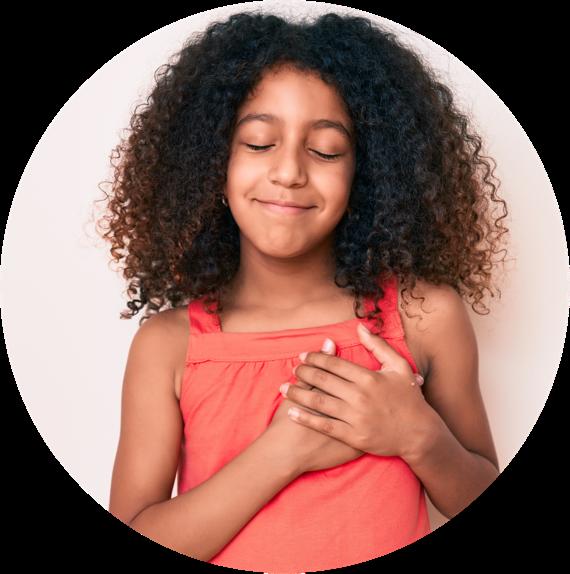
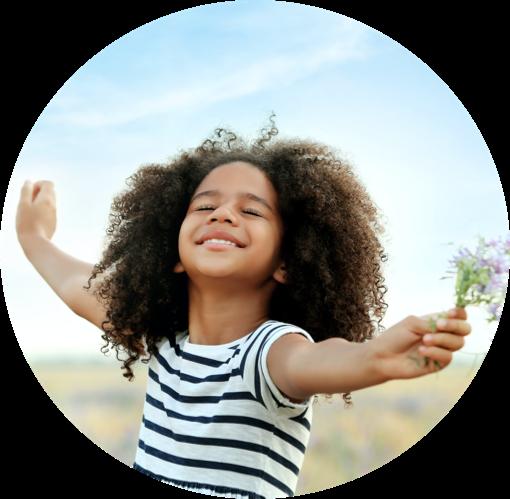
- Flowers open up to the sun during the day and then close at night when sun goes down. So now we are going to open our eyes and cup both hands on our heart, breathe in the fresh air and open our hands just like a blooming flower looking up to the sun. Open your arms wide to the sky.
- Now breathe out as you bring your hands back to your heart , close your eyes and bow your head just like the flower resting for the day. (Repeat)
Part 3: Sharing & Reflection

TEACHER / PARENT:

- Now open your eyes. How do you feel? Do you feel like you may have a little more energy like a blooming flower? Or do you feel more relaxed, like a soft petals of a flower that rests in the cool night?
- You can practice this anywhere. You may want to try this in a pretty little garden, or your neighborhood park. Then you will have a special place in your minds eye when you practice this somewhere else, like before a test, or when you are waiting for someone or something, or if you feel worried or nervous.
try
stress 5min standing / moving IN BLOOM PARENT TIP: Try this practice in a real garden breath Visit our website for more content: https://www.consciouschildhood.org Mindfulness grades3-8 © Conscious Childhood 2023 16
this to reduce
Optional: Serene Music grades4-8

Part 1: Sense Perception Through Imagination
TEACHER / PARENT:
- Find a place on the floor where you have a little space to yourself. You may place a sweater under your neck like a pillow. (Note: your students may be more comfortable on a carpet or outside on the grass)
- I want you to imagine yourself laying down in an open field. The breeze is gentle and the clouds are slowly drifting by. Examine the clouds. Are they all the same? Or are some full and fluffy? Do some float by faster?
Part 2: Breathing Practice
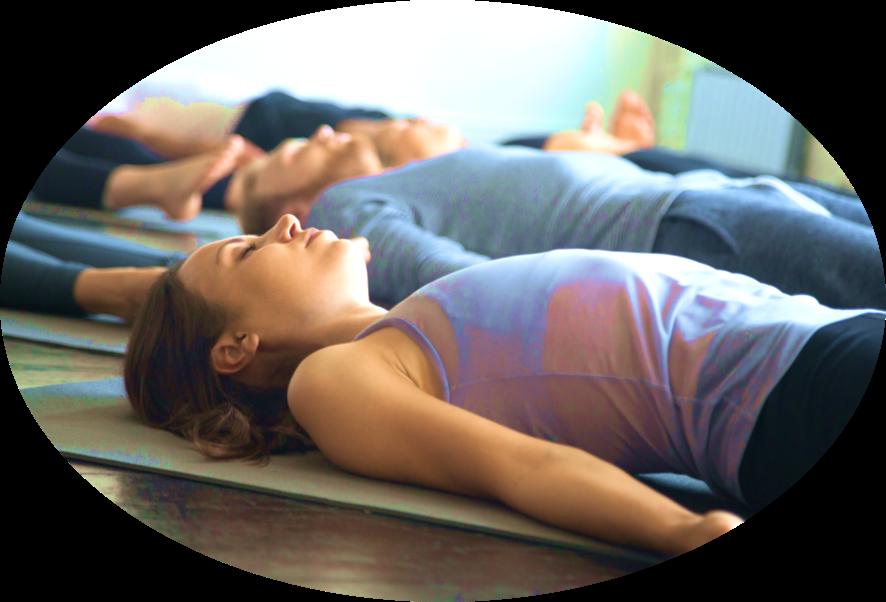
TEACHER / PARENT:
- Keeping your eyes closed, lets begin by taking 3 long slow breaths. You are going to breathe in from your nose the fresh air of the field for a count of 4 and then hold it while you picture your clouds above you. Then you will exhale a slow sigh through your mouth as if you are releasing all the tension in your body. Ready? breathe in 2 - 3 - 4 and hold it. Breathe out a sigh, 2 - 3 - 4 and pause as you relax.
(Repeat)
- Now lets imagine that the clouds hold our thoughts. Some thoughts float by and some thoughts stay awhile. As you lay here quietly, eyes closed, just relax until eventually a thought floats in. You don’t need to react to it.
- What does that thought cloud look like? Just observe the cloud but don’t judge it. Don’t decide if it is a good thought or bad thought. Just let it be: like all clouds, it will eventually pass by.
- Let’s focus on our breath again. (Repeat the same breathing exercise) and rest quietly.
- Eventually you may notice other thoughts coming and going. Notice them as if they are visitors passing by
Part 3: Sharing & Reflection
TEACHER / PARENT:

- Now open your eyes, sit up and stretch your arms up and place them in your lap.
- Think about WHO is noticing these thought clouds. That’s right, YOU ARE! You know that YOU are not your thoughts. Your thoughts are just visitors. Just like clouds, your thoughts eventually float by. Just let them go.
Mindfulness 5 try this to observe thoughts sitting / laying on floor CLOUDS FLOAT BY min
breath 17
Visit our website for more content: https://www.consciouschildhood.org © Conscious Childhood 2023 PARENT TIP: Set up a place for meditation
name:

title:


Visit our website for more content: https://www.ConsciousChildhood.org © Conscious Childhood 2023
a reflection by describing what you saw in your imagination, how you felt and what thoughts were going through your mind. You can write in a mindfulness journal, writing paper or use lines below:
Write
EasyYoga
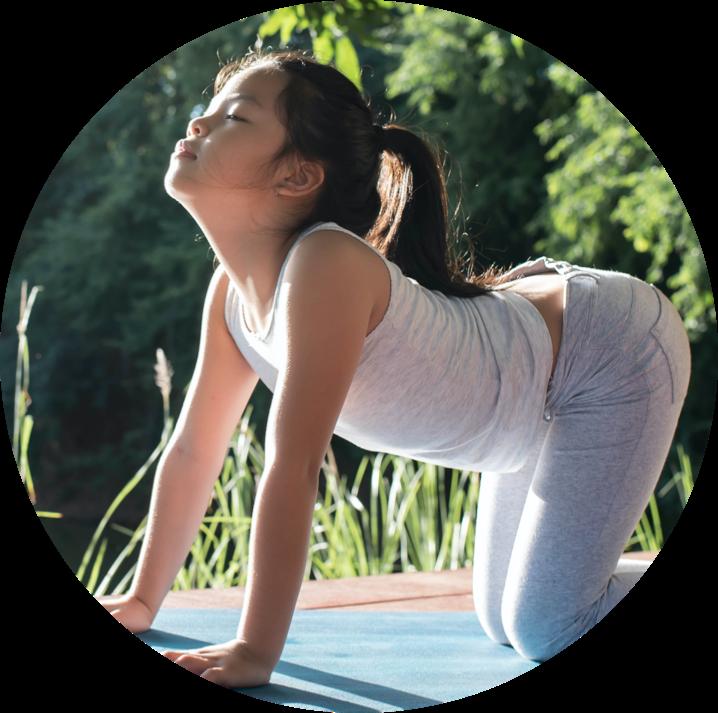
Why Yoga?
How does this practice helps kids focus?

YOGA GAMES FOR CHILDREN
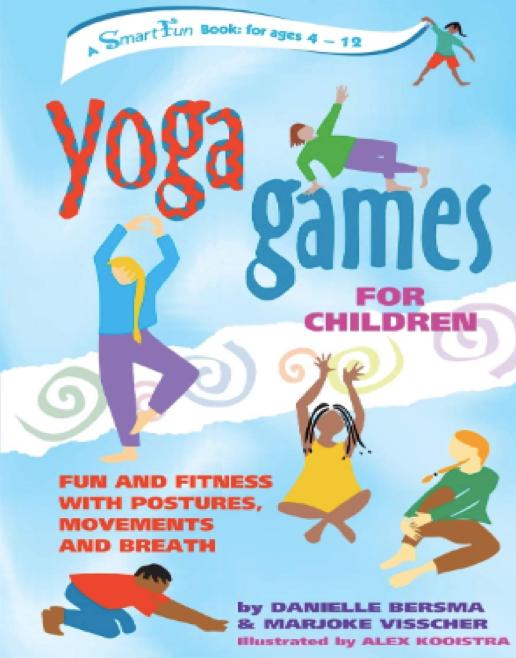
The authors say that even teachers who have never tried Yoga, now have a proven tool in their collection of interventions
We live in a world where our attention is pulled in so many directions, by external stimuli, that we have lost our sense of center. Our children, not surprisingly, are struggling with developing some of the basic building blocks for learning, such as self regulation, focus, body awareness and social connection. In the wake of the return back to the classroom, the majority of teachers have ranked behavior and mental health challenges as top priorities needing urgent attention, in the coming school years.
In Yoga Games , authors, Danielle Bersma and Marjoke Visscher, explain that yoga activities increase our children’s selfawareness, self-confidence and social development through breathing and movement. Through daily practice they improve motor skills and physical fitness, develop awareness of the senses, foster creativity and emotional growth, and build social skills. While that may seem like a tall order, children are delighted with and fully engaged in these opportunities to develop a growth mindset.
TIPS FOR SUCCESS:
HELLO, SUN! A Yoga Sun Salutation to Start Your Day. Children love “Sun Salutations.”
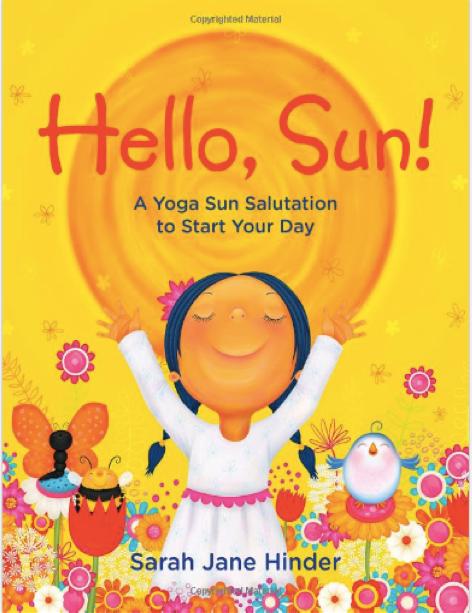
Author Sara Jane Hinder’s colorful picture book has playful, beautiful nature inspired illustrations to delight young kids.
“By the age of 4 years, as many as 40% of children have sufficient problems with attention to be of concern to parents and preschool teachers”
Palfrey, Levine, Walker, & Sullivan, National Institutes of Health
Click on our website below for a full description & buying options
Visit our website for more content:
1. Keep each pose brief and encourage creativity.
2. Let them know that mistakes are welcome –that’s why its called a “practice”.
3. Model for them a positive growth mindset by intentionally wobbling, falling, and trying again.
4. Schedule a daily practice..
https://www.consciouschildhood.org © Conscious Childhood 2023
Sun

Salutations
are ancient yoga movements and poses that were followed in a sequence for the purpose of warming up the body. This easy yoga practice below is a fun way to wake up your students anytime they need a bit of extra focus and vitality.
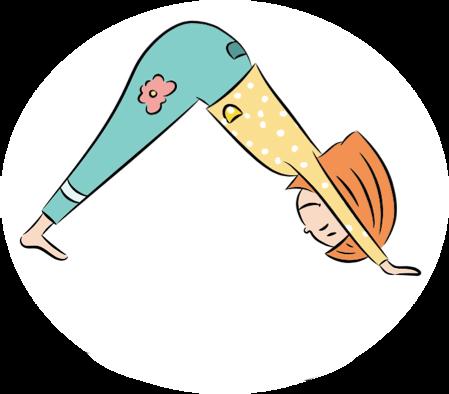
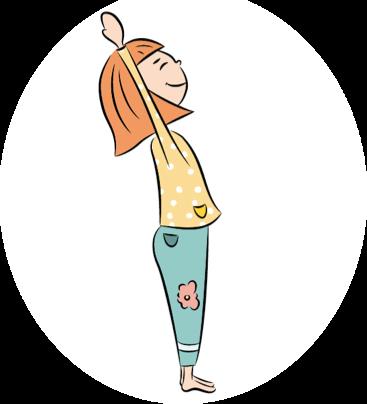
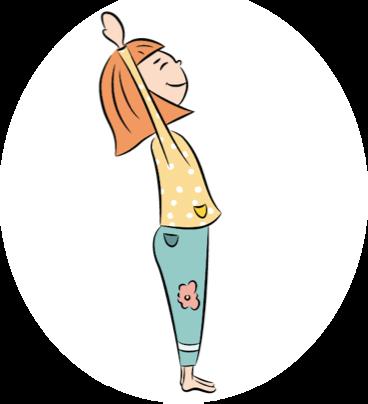
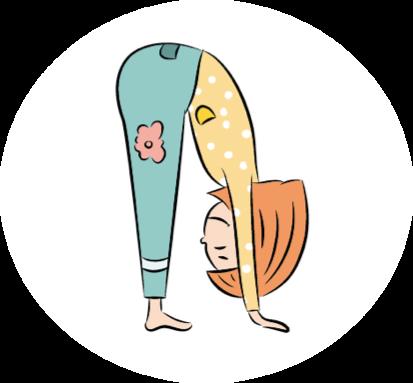
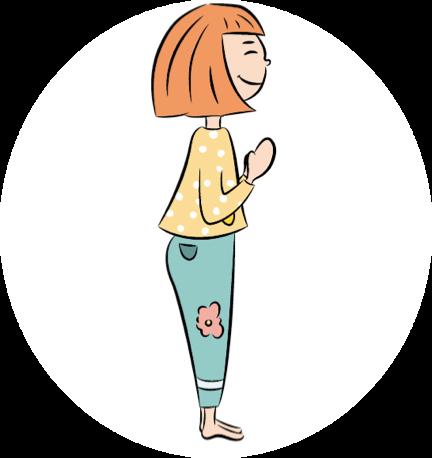

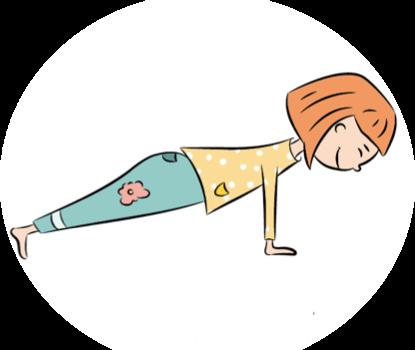
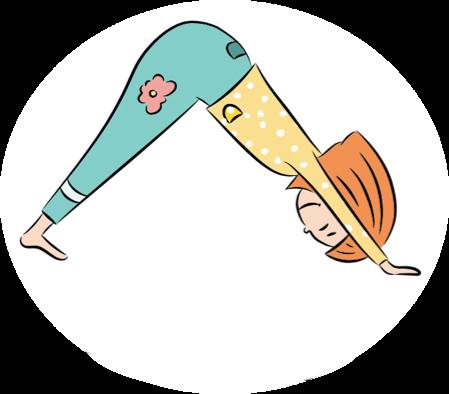
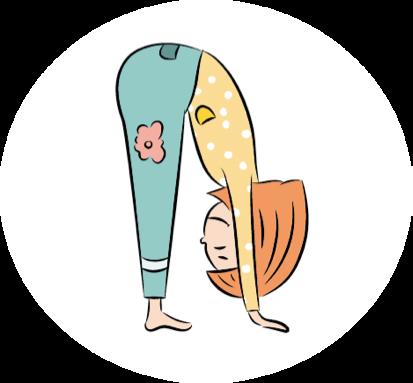
Directions: Start at the very top circle. Proceed in a clockwise manner. Each illustration demonstrates the position and the words to chant while holding that position for a few moments. After daily repetition, students will be able to memorize the sun salutation chant and positions. You may start very slow and focus on a controlled stretch during the movement. In time, if you wish to pick up the pace in order to inject some more energy into the practice. Have fun!
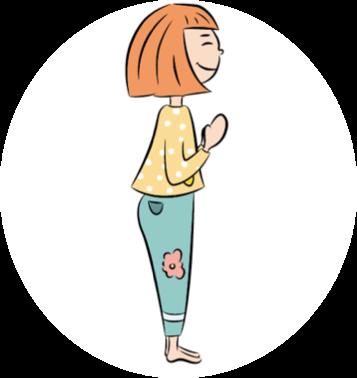
Then I Bring My Hands Together, Thank You Sun, Goodbye!
Hello, Sun, You Are Bright and Grand

I Stand Up Tall and Raise My Hands High
Then I Walk my Hands Back Like a Big Brown Bear
I Bend Up Like a Triangle With My Hips in the Air
I Drop my Tummy Down and Look Up at the Sky
Your Light Spreads Across the Land
I Bend Down and Touch the Flowers with Great Care
I Walk My Hands Forward With My Hips in the Air
I Straighten My Back Like a Strong Dragonfly
RELIGIOUS EDUCATOR

TIP: Substitute the name “Sun” for “God”

SUN Salutation
20
our website for more content:
Visit
https://www.consciouschildhood.org
© Conscious Childhood 2023
CreativeCharacters
Student Name: __________________________
Directions: Choose a partner for this lesson. Next, decide on an animal, person or object for the character. Then think of some traits for the character. Then choose an action using some yoga movements. Create a sentence or two as you both act out the character’s traits and actions. Mostimportantly,besillyandhavefun!
Yoga Poses:
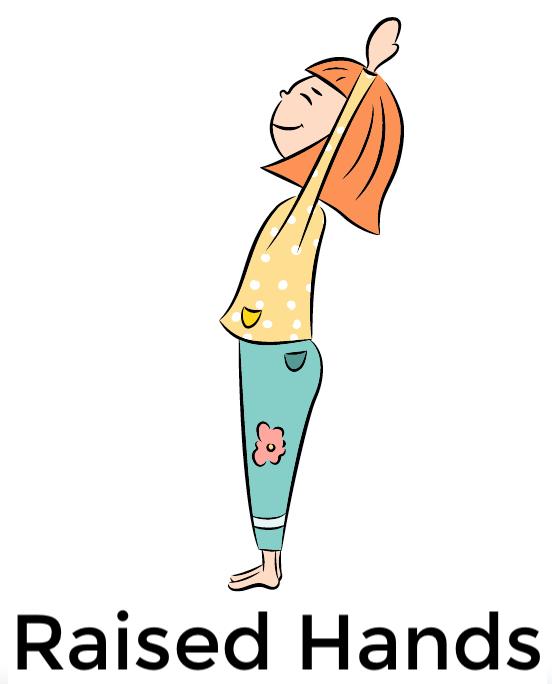

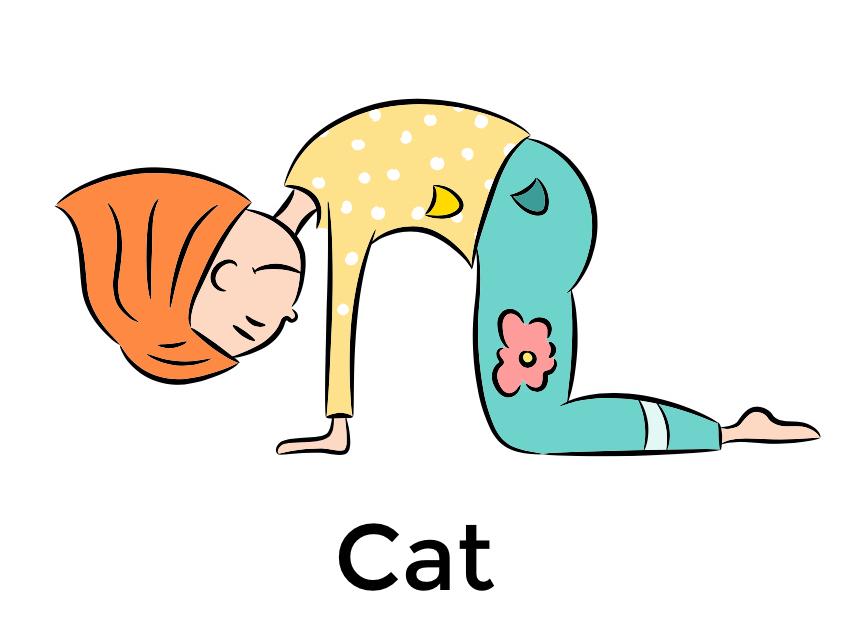


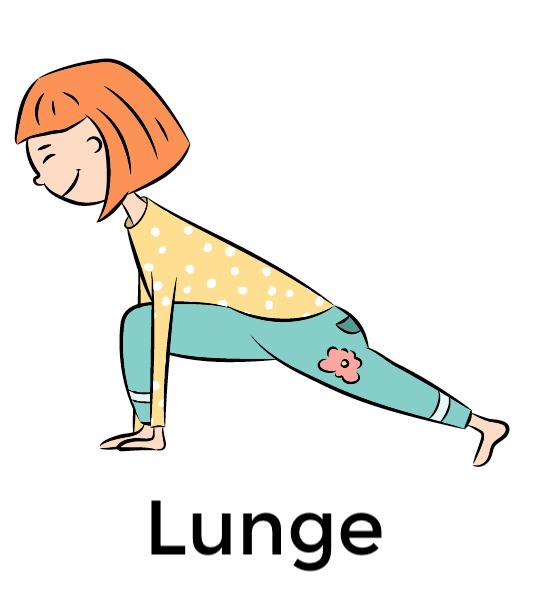
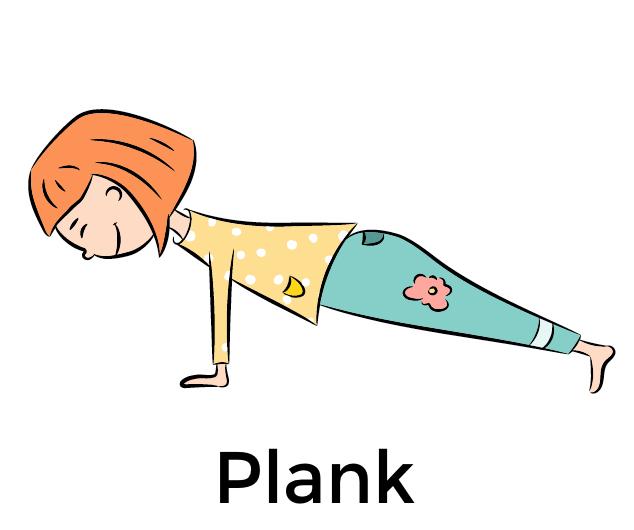
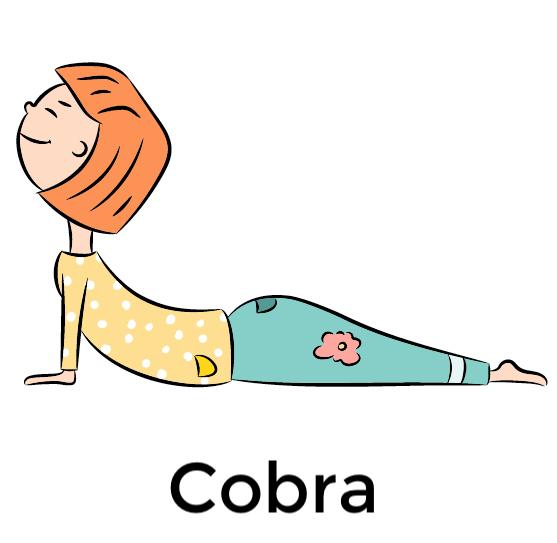
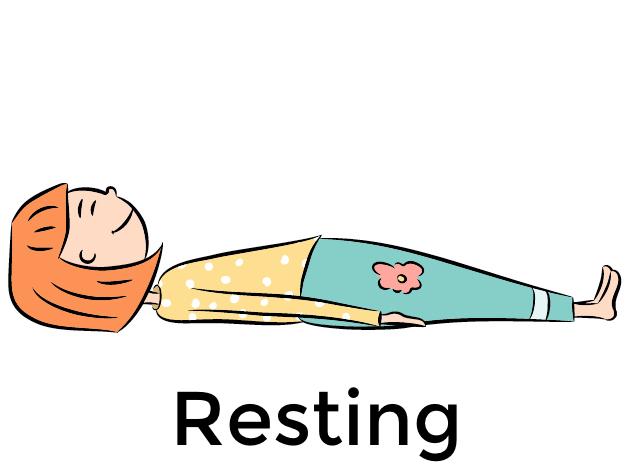
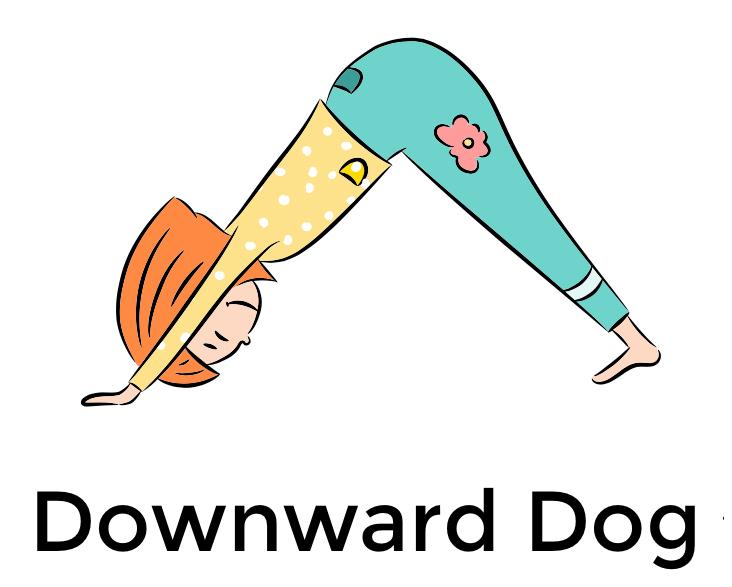

Word Banks:
Character / Object Trait Action
Brave Playful Tall
Clever Patient Pretty
Strong Friendly Tiny
Grateful Soft Bright
Curious Wise Gentle
Sample:
Lion Cow Giraffe
Cat Snake Flamingo
Hero Angel Queen
Tree Cloud Wave
Wind Sun Snowflake
Hunts Bends Stands
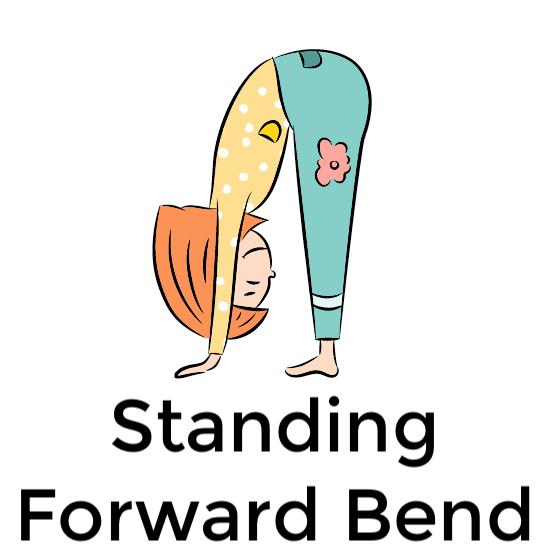
Sleeps Crawls Flies
Stretches Shines Smiles
Grows Moves Touches
Looks Sparkles Floats
The curious cat looks up at the tiny bird. The strong tree grows tall toward the sky.
TIP: You can add new movements like a sitting cat, or waving branches to your sentence.
Create your sentence on the back of page:
First, you and your partner create motions (using some yoga poses and your own) to show us your character’s traits and actions. On the back of this page, write a sentence or two about your character.

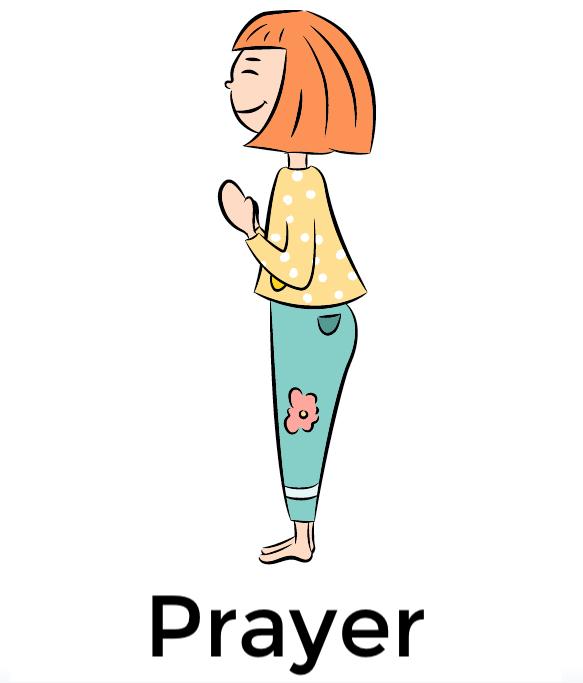

Visit

https://www.consciouschildhood.org


21
for more content:
our website
© Conscious Childhood 2023



Visit our website for more content: https://www.ConsciousChildhood.org © Conscious Childhood 2023 Create your sentence on writing paper or use lines below:
Mindful Journaling Prompts
Keeping a Daily Journal:
How journaling can help our children connect to their own emotions and experiences.
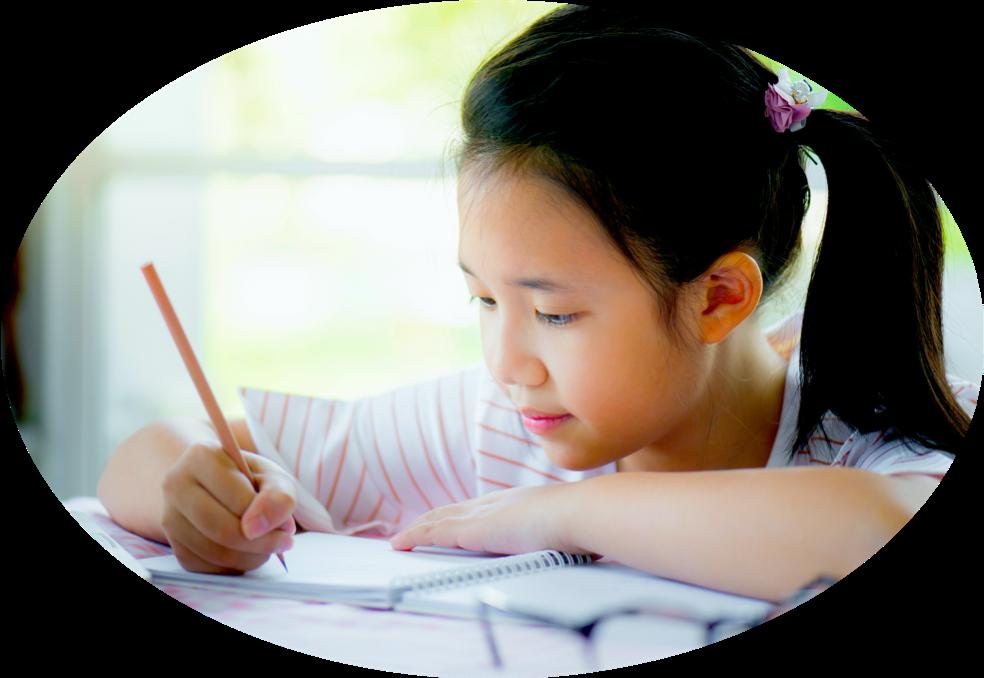 By Carolyn Kanjuro
By Carolyn Kanjuro
This deck of 30 playful cards will help young children navigate through difficult emotions with a variety of fun activities.
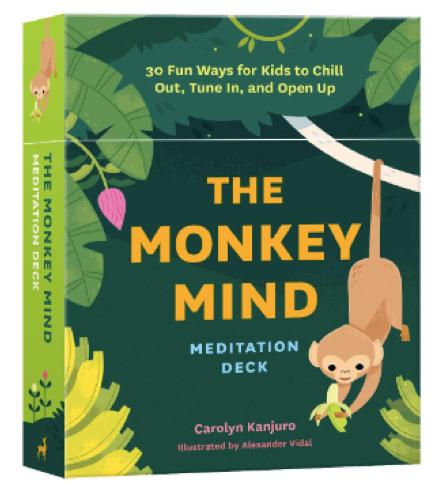
Grades 2 -6
Journaling, as a tool for mindfulness, has emerged as an influential trend in Social Emotional Learning (SEL), and for good reason: self-awareness and self-reflection help our students better connect to their own emotions and experiences, gain more selfknowledge and cultivate an increased mind -body connection. Expressing thoughts onto paper, through journaling, provides children with an effective outlet to release negativity by checking their thoughts for validity, identifying patterns or triggers which affect their moods, re-directing attention on more productive thoughts, and noticing their growth by reviewing past entries. In addition, several academic studies have indicated that children, who journal on a regular basis, can significantly reduce their anxiety, depression and negative social behaviors and clear the path for more social and academic success.
“Putting feelings down on paper reduces activity in a part of the brain called the amygdala, which is responsible for controlling the intensity of our emotions”
GOOD VIBES: Gratitude Journal
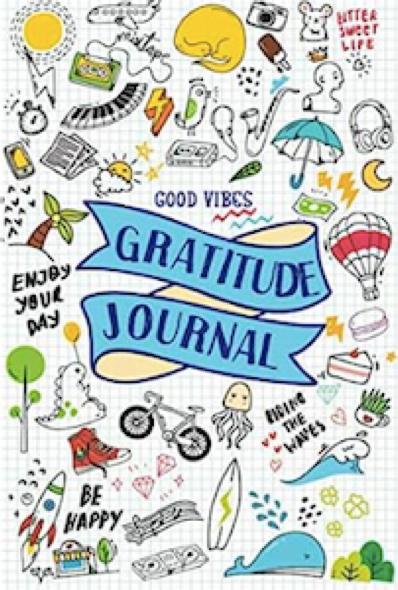

The author, Julia Rivers, created a ready made journal with engaging writing prompts. Grades 3 -8
Matthew Lieberman, PhD Professor Social Cognitive Neuroscience
UCLA
Click on our website below for a full description & buying options
Visit our website for more content:
TIPS FOR SUCCESS:
1. Choose a regular time for journaling when children are a calm state like after lunch or at the end of the day.
2. Include soft instrumental music or a designated outdoor space so the children connect this activity with a positive experience.

4. Have a cover decorating activity so the children can personalize their own journal.
5. Remind children that thoughts are neither “good” or “bad”.
6. Privacy should be valued and respected.
https://www.consciouschildhood.org © Conscious Childhood 2023
THE MONKEY MIND: 30 Fun Ways for Kids to Chill Out, Tune In and Open Up.
A Place for Me
Objectives:
gradesK-8
- Students will understand that they can choose and create thoughts through imaginary sensory perception.
- Students will witness these thoughts and connect familiar senses and emotions to these thoughts.


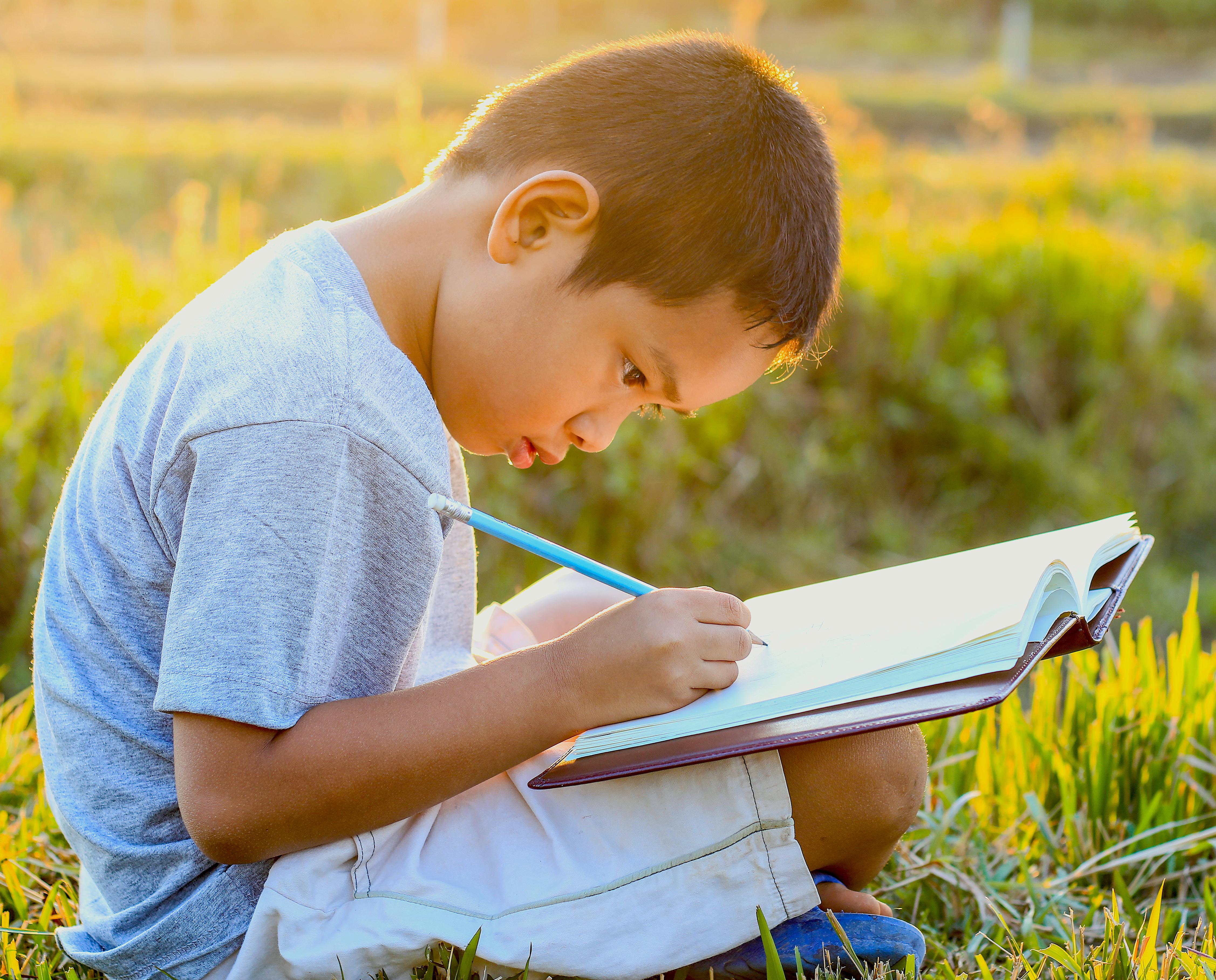
Materials: A pencil, crayons, grade level writing paper or journal book
Part 1: Finding a Quiet Place Through Imagination

TEACHER / PARENT:
- Close your eyes and take a few deep breaths. Now think about a place you know or can imagine that is a quiet place. This could be inside or outside. There may be some soft noises like a small animal, water or wind blowing through the trees. This is a place where you feel safe and calm. Can you feel anything here like a cozy blanket, warm sun or cool grass beneath your toes? What can you touch in this place and how does it feel? Can you smell or taste anything? How do you feel inside when you are here? Now you can rest here for a moment or two and breathe in this soft gentle place.
Part 2: Drawing / Journaling
TEACHER / PARENT:
- I want you to slowly open your eyes and remember all the things you saw and all the things you felt about this quiet place. Draw a picture of something you saw. Add more pictures as you think of them. Write a few words around your picture that describe your place and how you felt inside.
Part 3: Reflection / Assessment:
- Students will be able to answer the question, “Who is imagining this special place?” with the answer, “I am”.
TEACHER / PARENT:
- Everyone here has created their own special place. If I were to ask you, “Who is imaging this place in your drawing, what would you say?” (Help each child understand that the answer is “I am.” )
- So in conclusion, you are not what you think about. You are the one who can see your thoughts and you can create new thoughts.
Part 4: Extension
- Students should be encouraged to continue to journal in this way about real and imaginary places.
TIP: Offer to spell and write feeling and descriptive words on the board for younger grades. Older students can use journal to write complete sentences or paragraphs
Journaling
24 Visit our website for more content: https://www.consciouschildhood.org © Conscious Childhood 2023
Wrapping up the Week
Objectives:
grades3-8
- Students will develop a habit of journaling as a tool for self- reflection.
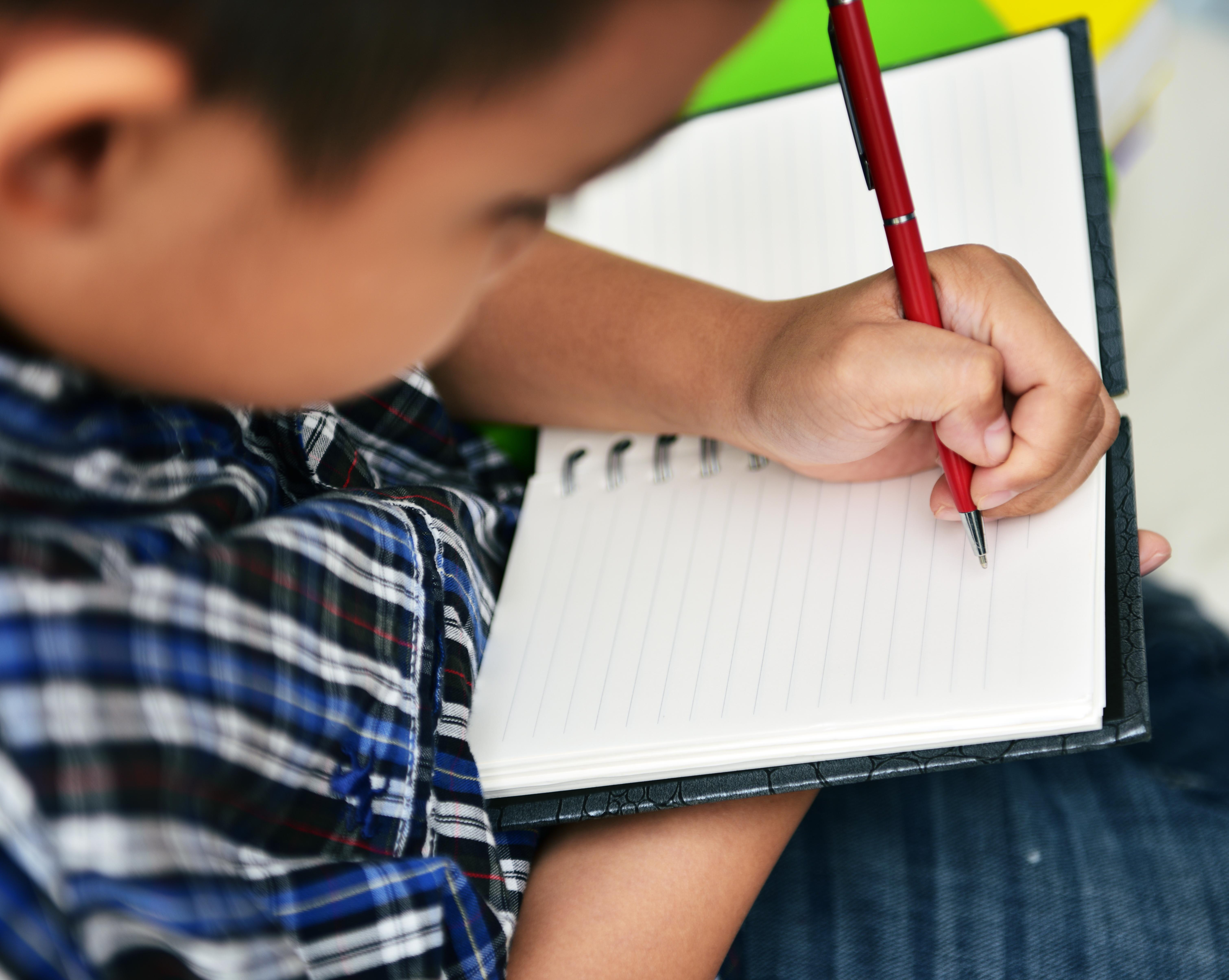
- Students will develop a gratitude practice for daily “glimmers”
- Students will record areas of positive growth and note progress.

Materials : A pencil or pen, journal book.
Part 1: Self Reflection through Mindfulness

TEACHER / PARENT:
- Close your eyes and take a few deep breaths. Now take a moment to reflect on this past week. A “glimmer” is a small unexpected pleasure that you experienced, something that was pretty, sweet, cozy, or just nice in some way – something that made you smile or feel loved. (give examples) . Describe any of your “glimmers” in your journal.
- Now choose one of these prompts to write about this week, or use one of your own. Please include any thoughts or feelings that came up for you.
• Something I really enjoyed this week was...
• I contributed as a team player this week when I …
• This weeks proudest moment was when I …
• Something I did for someone else was …
• A new hobby, sport or activity that tried is…
• One challenge I faced this week was…
• One time this week when I felt calm and peaceful was..
• This week I had a worry that turned out to be OK…
• A friend that helped me this week was when…
• Something that I am always grateful for is …
Part 2: End of Month Reflection / Assessment:

Addyour own prompts
- Students will self- assess, by reviewing their journal entries each month and writing a reflection of the previous month.
TEACHER / PARENT:
Take a moment to look back and read your journal entries. Now I’d like you to write a little note of encouragement to yourself on that entry page like “way to go” or “you’ve got good friends” or “keep trying” or “you are a good person”. Then circle your note.
Part 3: Extension
- Students should be encouraged to continue journaling all year round.
TIP: Privacy in journaling is important. Children may wish to share but should not be required to do so .
Journaling
Visit our website for more content: https://www.consciouschildhood.org © Conscious Childhood 2023 25
Check My Thoughts
Objectives:
grades6-8
- Students will understand that their thoughts can be challenged for accuracy and helpfulness.

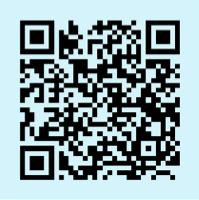

- Students will learn to witness thoughts without judgement.
Materials : A pencil or pen, journal book.
Part 1: Awareness of Unhelpful Self-Talk

TEACHER / PARENT:
- Close your eyes and take a few deep breaths. Take a moment to reflect on this past week. Was there a time this week when you felt fear, worry or you engaged in negative self talk and you just couldn’t stop the thought? The following list has examples of uncomfortable thoughts to give you some ideas. Write a a few sentences about what happened that caused your uncomfortable thoughts. Describe your feelings.
• I am expected to do something that I just can’t do ..
• Some people don’t like me because ____and that’s why I feel alone.
• I feel like something bad is going to happen because…
• I’m not happy because I don’t have enough good things in my life like…
• I wish I was more clever, athletic, attractive , etc.. because …
• I feel guilty or ashamed of myself because ____and now I think I am ___.
• If I try to do this, people will laugh at me and that will hurt too much.
• Why can’t I get anything right. I messed up again when I….
Part 2: Reflection / Assessment:
- Students will self- assess, by reviewing their journal entry and check validity of their thoughts with a list of questions.
TEACHER / PARENT:
- Now let’s check your thoughts. I’d like you to write a response to one of these examples of uncomfortable thoughts in your journal. Then write an answer to these questions under your journal entry:
1. Do I have enough evidence to know for sure that this is true?
2. Is this thought helpful or inspiring? Does believing this thought help me move toward bringing my gifts, talents, and kindness to the world, or does this thought get in the way of my hopes and dreams?
3. What could I consider as an alternative way of looking at it?
4. How would I feel if I did not have this fear, worry or concern?
5. Who could you talk to about this thought to help check for accuracy?
TIP : Although thoughts should not be judged as good or bad, they should still be questioned for validity. Preteens may feel vulnerable, so privacy should be respected.
Journaling
26
our website for more content: https://www.consciouschildhood.org © Conscious Childhood 2023
Visit
title:
Choose a journal topic or prompt. Respond to the prompt by following the instructions in the lesson. You can write in a mindfulness journal, writing paper or use lines below:

Visit our website for more content: https://www.ConsciousChildhood.org

name:

Childhood 2023
© Conscious
Emotional
Intelligence
The importance of developing a child’s vocabulary for feelings and emotions can not be understated. We now know that emotional regulation and knowledge are key indicators for academic and social success in school age children. According to a study, published by the American Psychological Association, emotional intelligence is related to many important outcomes for children and adults. Children with higher emotional intelligence are better able to pay attention, are more engaged in school, have more positive relationships, and are more empathic. They also regulate their behaviors better and earn higher grades. (Raver, Garner, & Smith -Donald 2007).

In her new book, Atlas of the HeartMapping Meaningful Connections and the Language of Human Experience , acclaimed author and social science researcher, Brene’ Brown, has discovered that the process of simply identifying emotions in yourself is directly related to ”greater emotion regulation and psychosocial well being”.
-Brene Brown
Her compelling research shows that “language does more than just communicate emotion, it can actually shape what we are feeling”
In a Ted Talk, with nearly 24 million views, Brown says "when something difficult happens, emotion is at the wheel; cognition and behavior are bound and gagged in the trunk”. In Atlas of the Heart, Brown concludes, ”When we don’t have the language to talk about what we are experiencing, our ability to make sense of what’s happening and share it with others is severely limited. Without accurate language, we struggle to get the help we need”
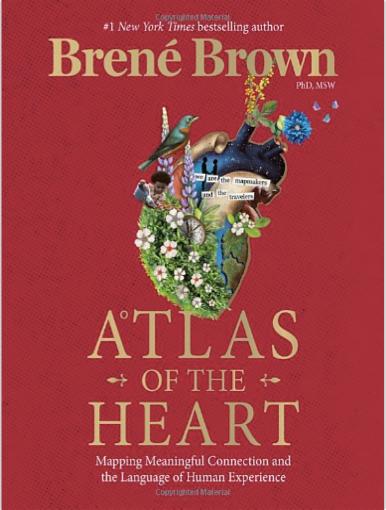
According to psychologist, Susan David, from Harvard Medical School, best selling author, and one of the world’s leading business management thinkers “if we don’t have a sufficient vocabulary to describe our emotions, it is difficult to communicate our needs and ask for help from others.” So from an evolutionary

A Must Have for a Teacher’s Understanding of Emotional Language
As a writer, sometimes I labor over trying to find just the right word to describe a feeling or emotion. After reading Brene Brown’s book I realized how important words are in communication, especially in social relationships. In Atlas of the Heart, Brene draws upon her extensive research as a social scientist to take you on a language journey of 87 emotions and experiences, their correct definitions and the frequent misuse and misunderstandings of meaning. An education in emotional language is a necessity for all meaningful human interaction and an opportunity to prepare our children for a conscious future.
Click on our website below for a full description & buying options

To form meaningful connections with others, we must first connect with ourselves.”
“
28
Visit our website for more content: https://www.consciouschildhood.org © Conscious Childhood 2023
standpoint, what is the point in naming our emotions; how has this served us? David states, “Emotions signal rewards and dangers. They point us in the direction of our hurt. They can also tell us which situation to engage with and which to avoid. They can be beacons, not barriers; they help us identify what we most care about and motivate us to make positive changes.”
Other research suggests that identifying emotions help us make sense of our surroundings and provide needed input for managing ourselves and responding effectively to others. We prepare our children for their future success in the 21 st century workplace by investing in their personal growth to become compassionate and empathetic communicators. Emotions and thoughts or so intrinsically intertwined, that we cannot focus on cognitive development without considering the role that emotions play on our thought processes and ability to learn.

All students can acquire (EQ) Emotional Intelligence by learning a set of skills and behaviors which can continually be developed and strengthened over time.
Although rarely a part of the academic school curriculum, the time for children to begin to learn these skills is at a very young age and throughout the school years.
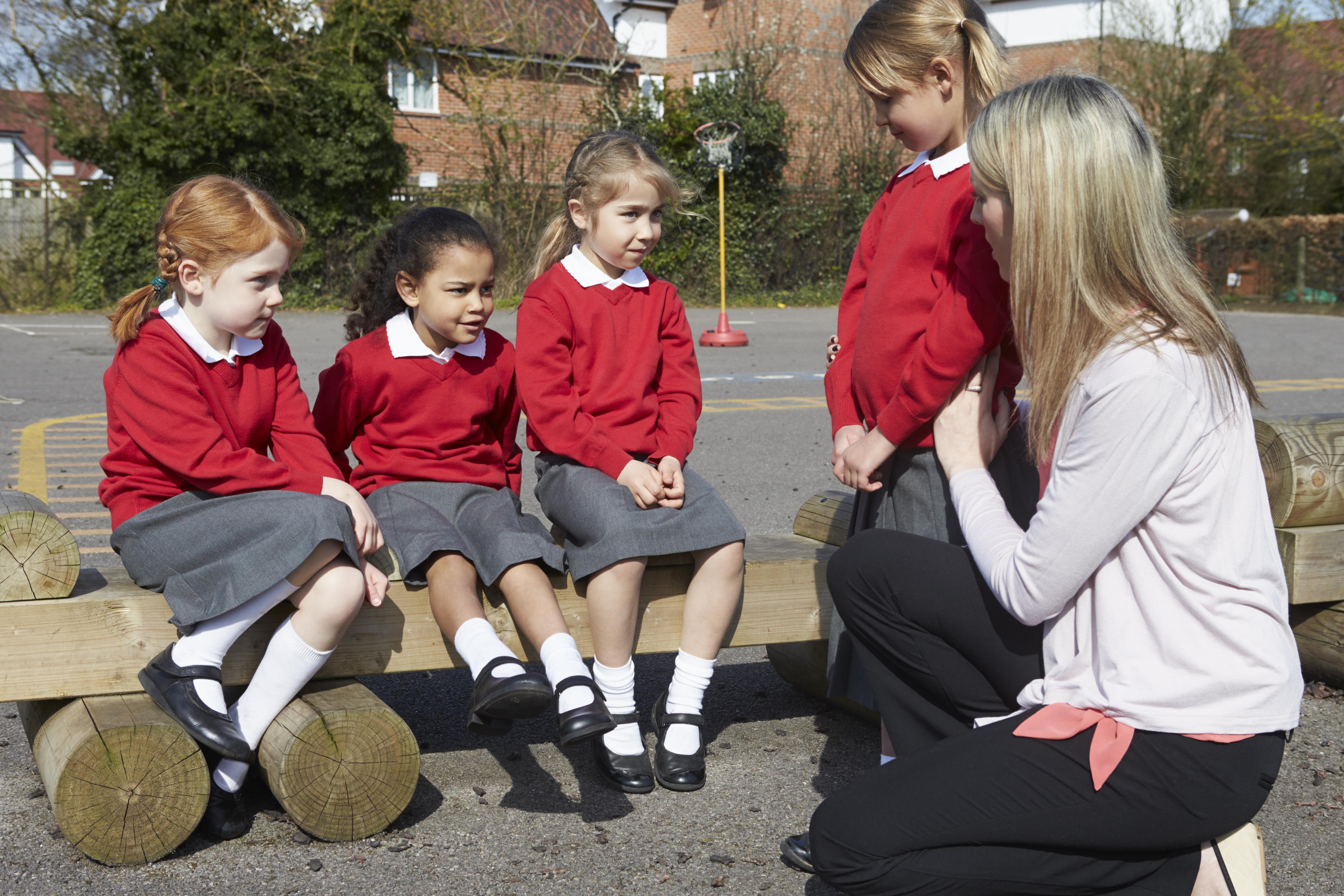
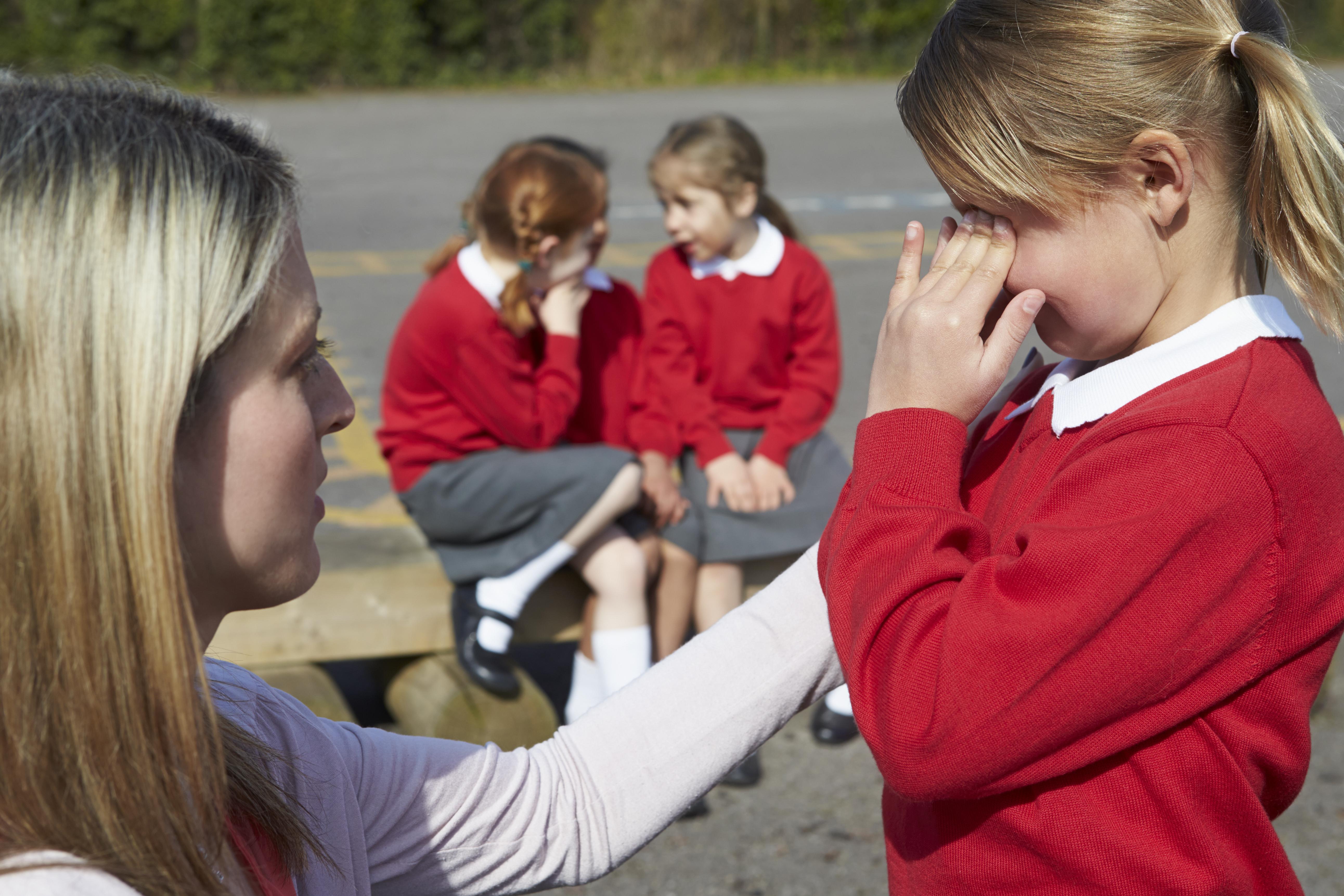
But in order to foster these skills in our children, teachers will need to become emotionally intelligent leaders who can manage their own emotions, empathize with others, communicate effectively and manage conflict. Unfortunately, this is not a common course in universities, teacher preparation classes or continuing teacher education, even though, this is clearly a necessary 21 st century life skill for our future generation.
The good news it that the CASEL non -profit organization (Collaborative for Academic, Social, and Emotional Learning) engages policymakers and promotes legislation at the federal and state level to advance evidencebased SEL (Social Emotional Learning) policies and funding. A variety of teacher and classroom SEL training programs are available for all school budgets. They even facilitate funding programs for your school
For a list of approved SEL training programs go to (https://casel.org)
See Social Emotional Activities for your class Page 30 -41 29
Social Emotional Learning
Guiding Friendships:
How do friendships help children grow emotionally?.
MY BREATH LOVES ME
By Claire E Hallinan
This Read Aloud book demonstrates how sometimes children need a little help navigating difficult social challenges (i.e. when I child feels left out) by using the breath, pause, notice and respond sequence.
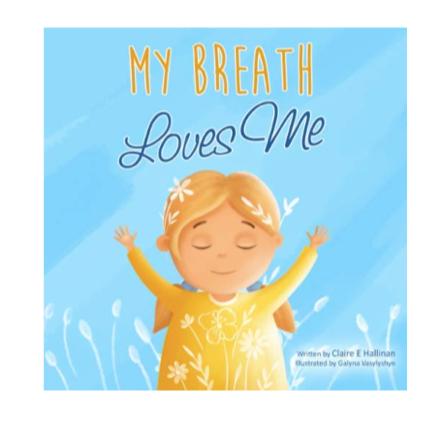
Grade K -3
Friendships play an essential role in children's social-emotional development. By broadening their horizons beyond family, providing identity formation opportunities at school, and offering support when necessary, friendships with classmates provide children with vital social-emotional growth opportunities.
Teachers can employ numerous strategies to teach and reinforce (SEL) relationship skills in students, including building an emotional vocabulary. When children learn to identify and understand their own emotions by embracing and discussing them freely, they are better to equipped to make sense of their behavior and actions, which in turn, set them up for a greater understanding of other children and their emotional framework. Some methods involve pairing children up with peers of diverse cultures who share similar interests, activities and temperament; while other strategies include organizing group projects requiring cooperation or activities where the teacher can coach students in managing conflicts and disagreements.

TIPS FOR SUCCESS:
“

I AM ENOUGH
By Grace Byers
This Read Aloud book is a beautifully illustrated and inspiring ode to loving who you are, respecting others and being kind to one another. Grade K -3
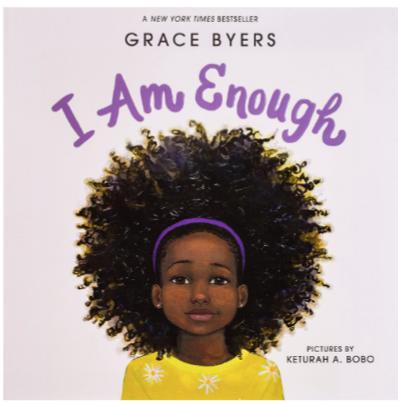
To form meaningful connections with others, we must first connect with ourselves.”
- Brene Brown – author, scientist & social researcher
Click on our website below for a full description & buying options
Visit our website for more content:
1. Each child should have an “emotional” vocabulary word list to use when identifying emotions and feelings.
2. Feeling empathy is a skill which can be taught. Encourage understanding of other people by using fictional stories to discuss character feelings and actions .
4. Challenging behavior is always an indication of unmanageable feelings.
5. Validate their feelings as real for them. d.

https://www.consciouschildhood.org © Conscious Childhood 2023
Web gradesK-8
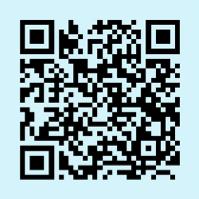

EMOTIONAL VOCABULARY
Emotions and thoughts or so intrinsically intertwined, that we cannot focus on cognitive development without considering the role that emotions play on our thought processes and ability to learn.
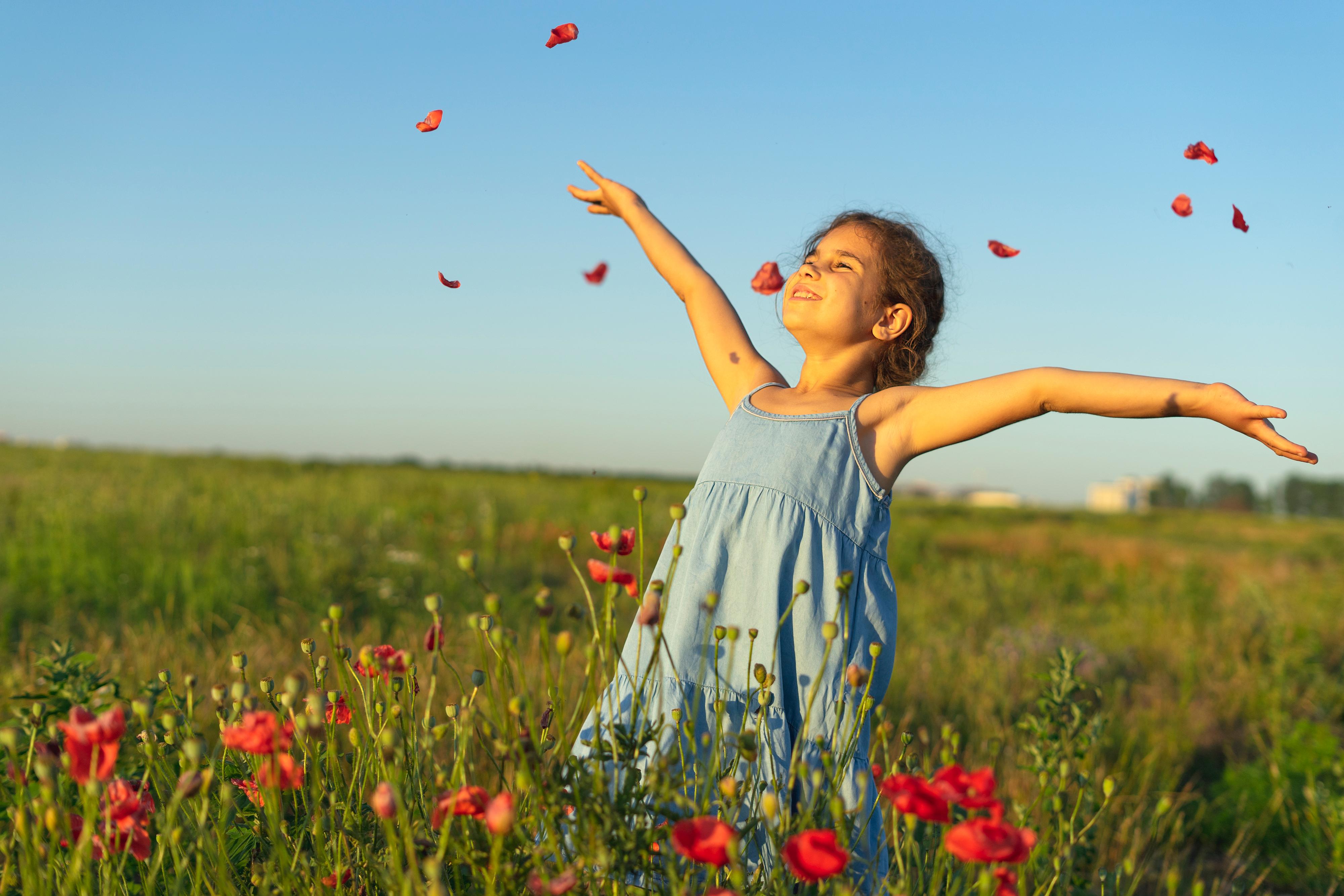
Objectives:
- Students will develop a collection of emotional words that describe feelings.
- Students will identify words that are associated with emotions in a situation.
- Students will write stories involving characters using emotional vocabulary.
Materials: A pencil, markers or crayon, a journal, a storybook or real situation
Part 1: Naming Emotions
TEACHER / PARENT:

- We have so many emotions that run through our bodies that sometimes we feel a little overwhelmed. Sometimes we are not even sure exactly how we feel. We may feel anger in our bodies, but we may also feel frustration or disappointment at the same time. It’s important to know that these feelings are just happening to us; they are not who we are. We are just the ones who are feeling them. For example we should not say “I am angry” but rather “I feel anger” or “ Anger is inside me”. We can also learn to recognize feelings in other people.
- (For the older grades) First, draw a triangle in the middle of your page. Now draw two eyes in the triangle. Remember, you are just observing these thoughts.
- (For the younger grades) Use the chart with faces and add the feeling words under the picture.) ( Teacher can write words on the board for reference)
- When you think of these words (or faces), what other feelings come to mind? (Give examples and ask students if they would like to share).
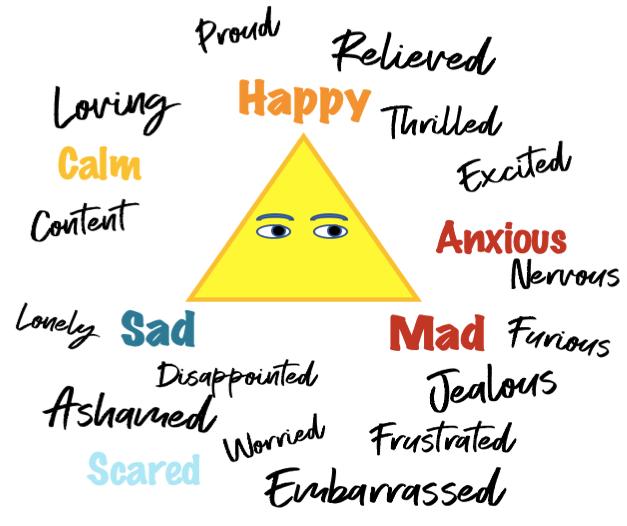
- Now I’m going to (read, tell, make up) a story about characters with pretty strong emotions. I will pause throughout the story so that we can identify other emotions and feelings and add them to our list.
Part 2: Reflection / Assessment:
- Share your words with your class. Students should be encouraged to continue adding to their word web.
TIP: A fictional social challenge in the classroom or playground could be a great story to use for this exercise.
Word
Visit our website for more content: https://www.consciouschildhood.org © Conscious Childhood 2023 Social Emotional 31
Tip: Introduce using a thesaurus for older students
Teacher Tip: Let students suggest words and write all options down on the board or word wall. Students may choose from any word from the list

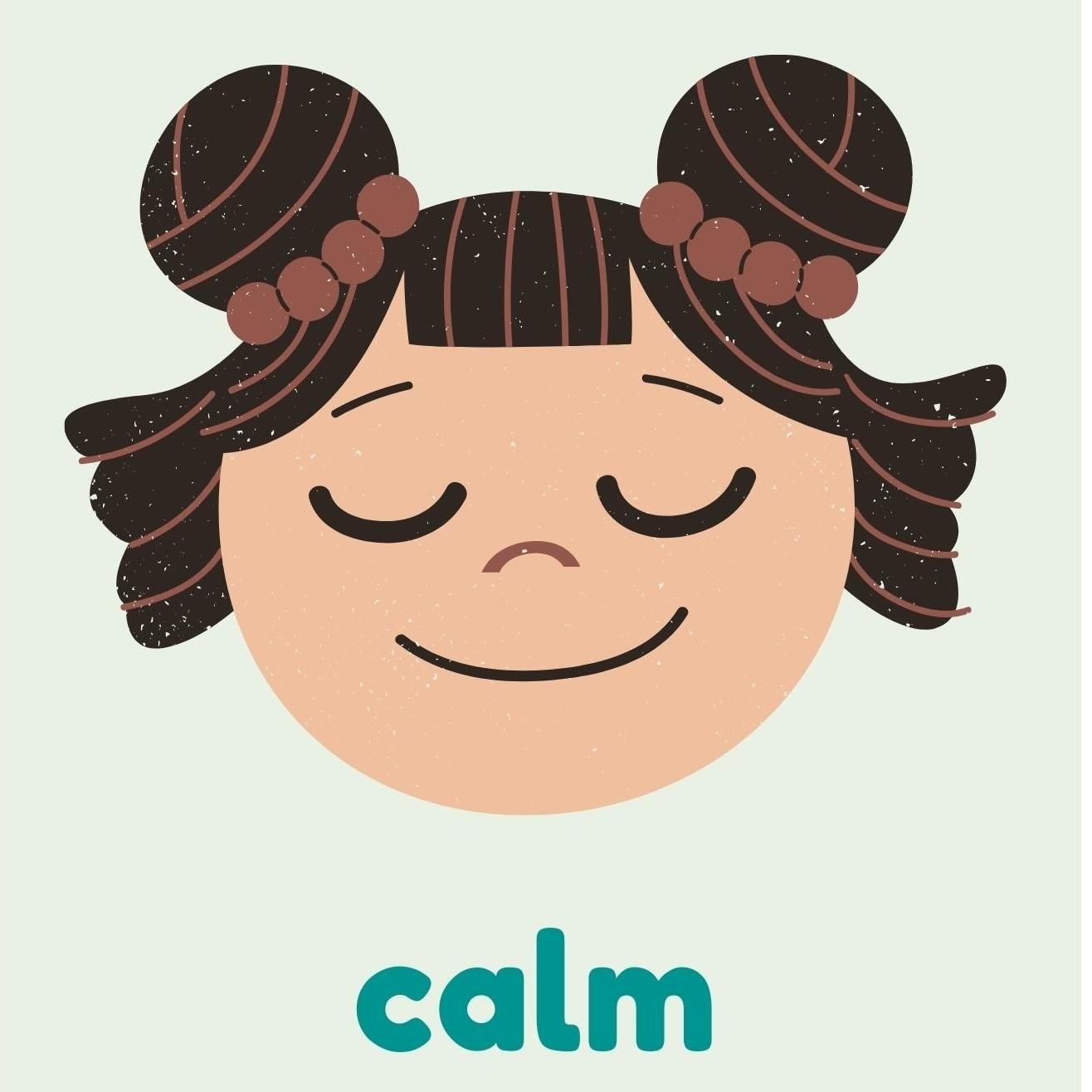


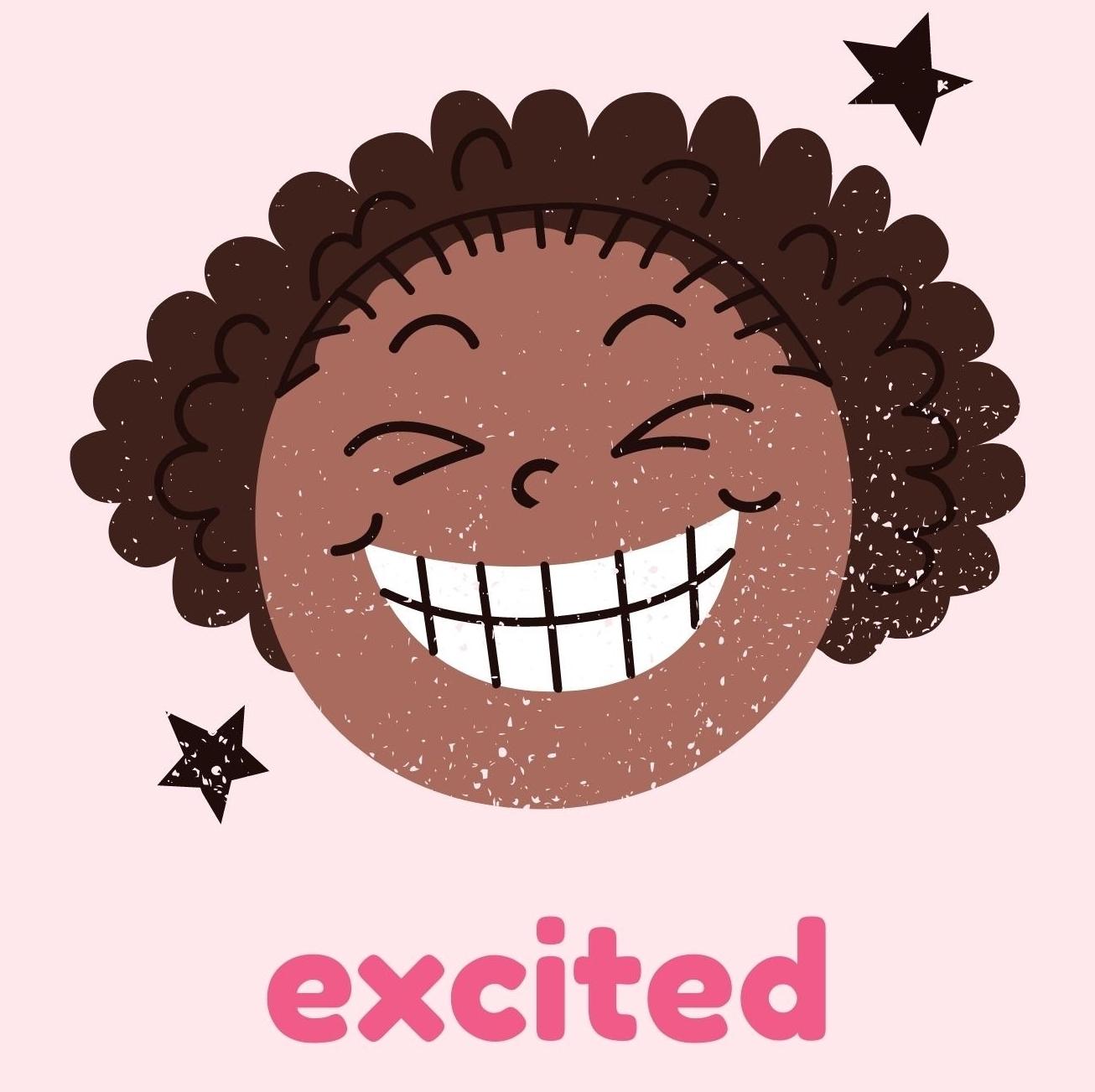





Feelings

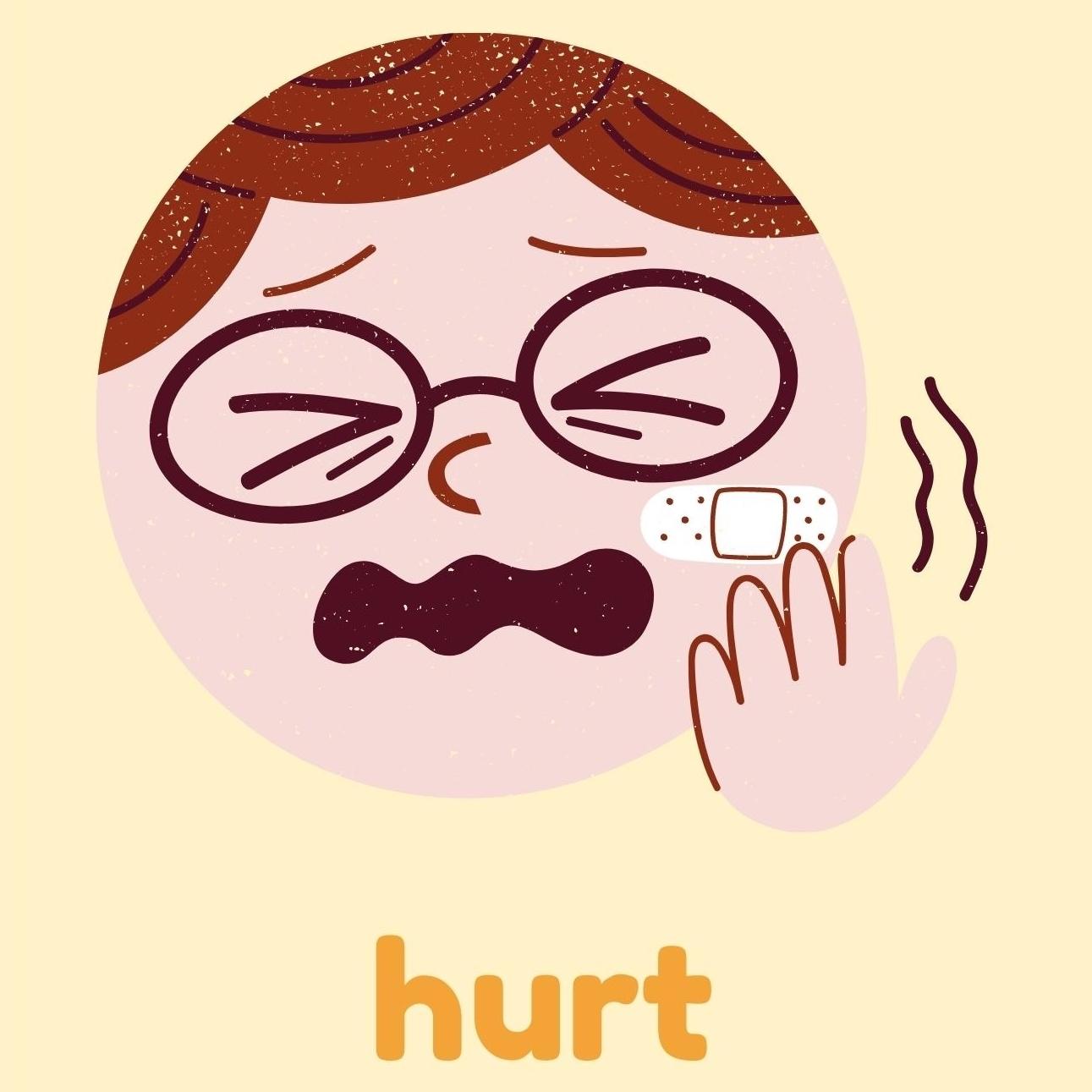
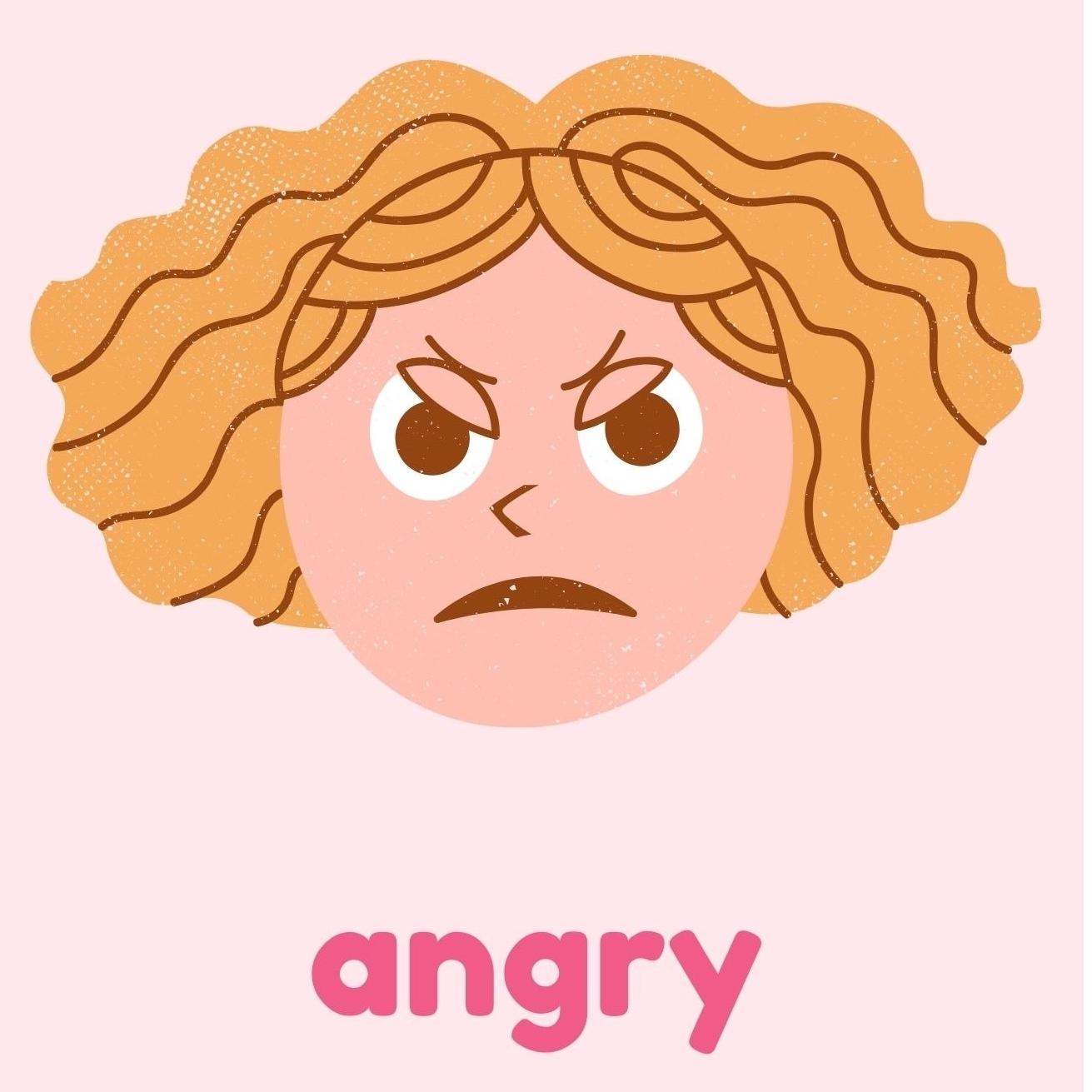
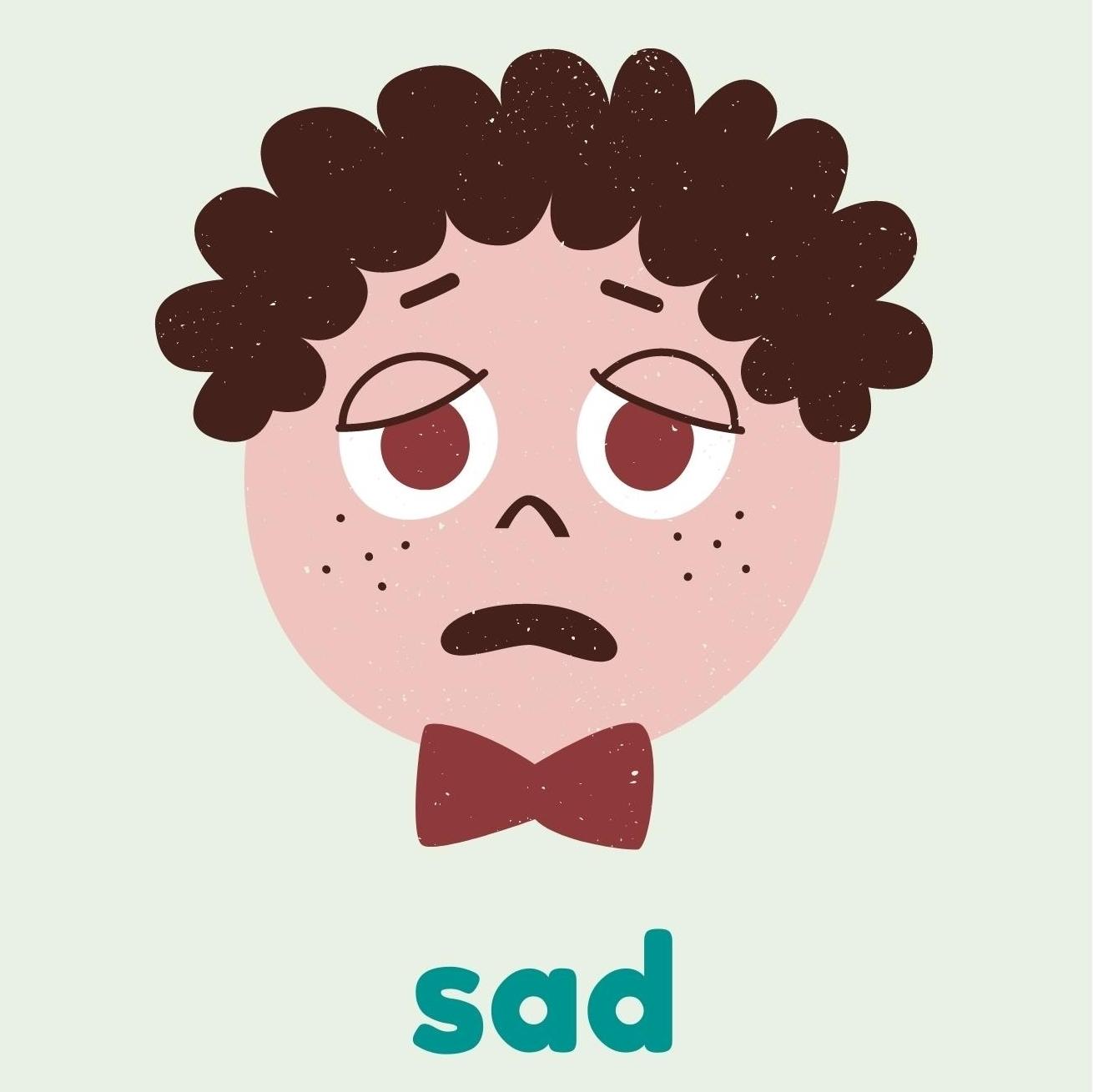
Visit our website for more content: https://www.ConsciousChildhood.org © Conscious Childhood 2023
down the feeling word under the face.
name: gradesK-2 Write
grades3-8

When you think of these words, what other feelings come to mind? Start your own collection of feeling words here, so that you can refer to them when you are writing in your journal.
name:
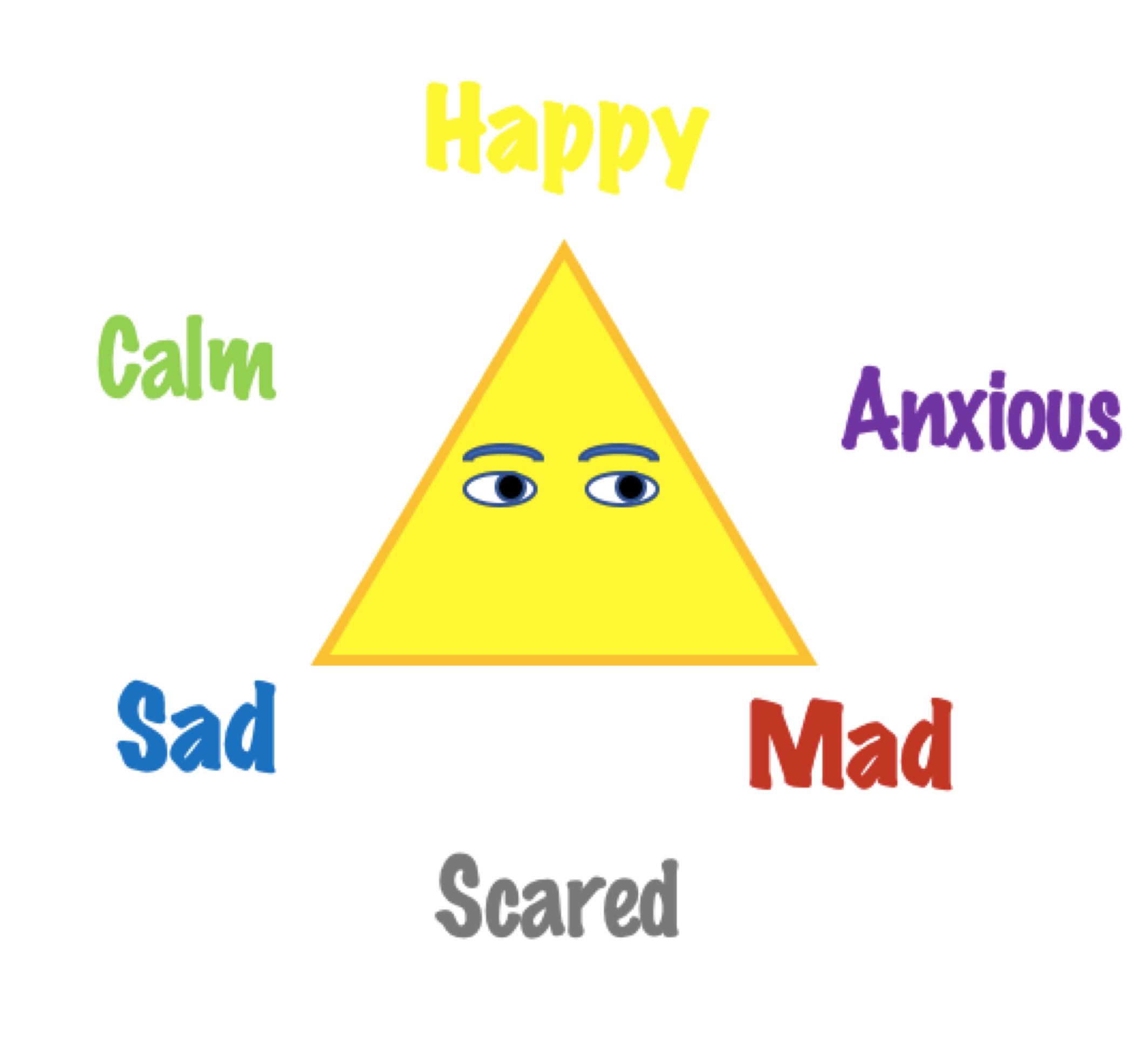
Visit our website for more content: https://www.ConsciousChildhood.org © Conscious Childhood 2023
Take a Pause
HANDLING CHALLENGES
Reactivity is a symptom of the culture we live in. I call it high emotional reaction to adversity . Here is a simple tool that we can use with our students and our own families that encourage everyone to just Take a Pause, and learn to handle life’s difficulties from a place of calm conscious awareness.
Objectives:
- Students will understand that immediately reacting is a habit.
- Students will demonstrate and practice the “Take A Pause” STOP – WAIT - GO Materials: A pencil or pen, a storybook, or a real situation

Part 1: Stopping the immediate reaction
TEACHER / PARENT:
- Part of life is experiencing anger and frustration as well as joy and laughter. That’s normal. We can learn to handle our challenges better by giving ourselves a little time to connect our minds to our bodies before we respond.
STOP: When we realize that we are in a situation that bothers us. Take a few deep breaths.
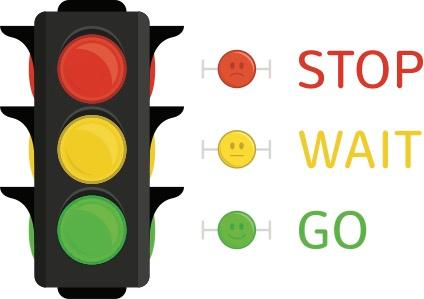
PAUSE: Ask yourself,
“What is the feeling that I have in my body?”
“Where is that feeling living in my body?”
“What other thoughts do I have in my mind right now?”
“How was I going to react before I took a pause?”
“What would be the opposite response to that reaction?
“What would be a response somewhere in the middle?”
“Which is the best response?”
GO : Move forward with a response. Observe results.
Part 2: Reflection / Assessment:
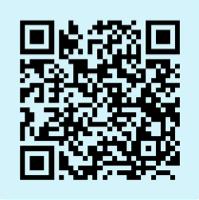
- Take a moment to write about a time that you regret the way you reacted to a situation. Use the STOP – PAUSE – GO method to write about how you would respond to that today situation today.
- (For the younger grades) Draw a picture of what happened before and after you took a pause.
TIP: Students should be encouraged seek help in discussing options with trusted adults before reacting and it’s OK to take a little more time to make a decision before action.
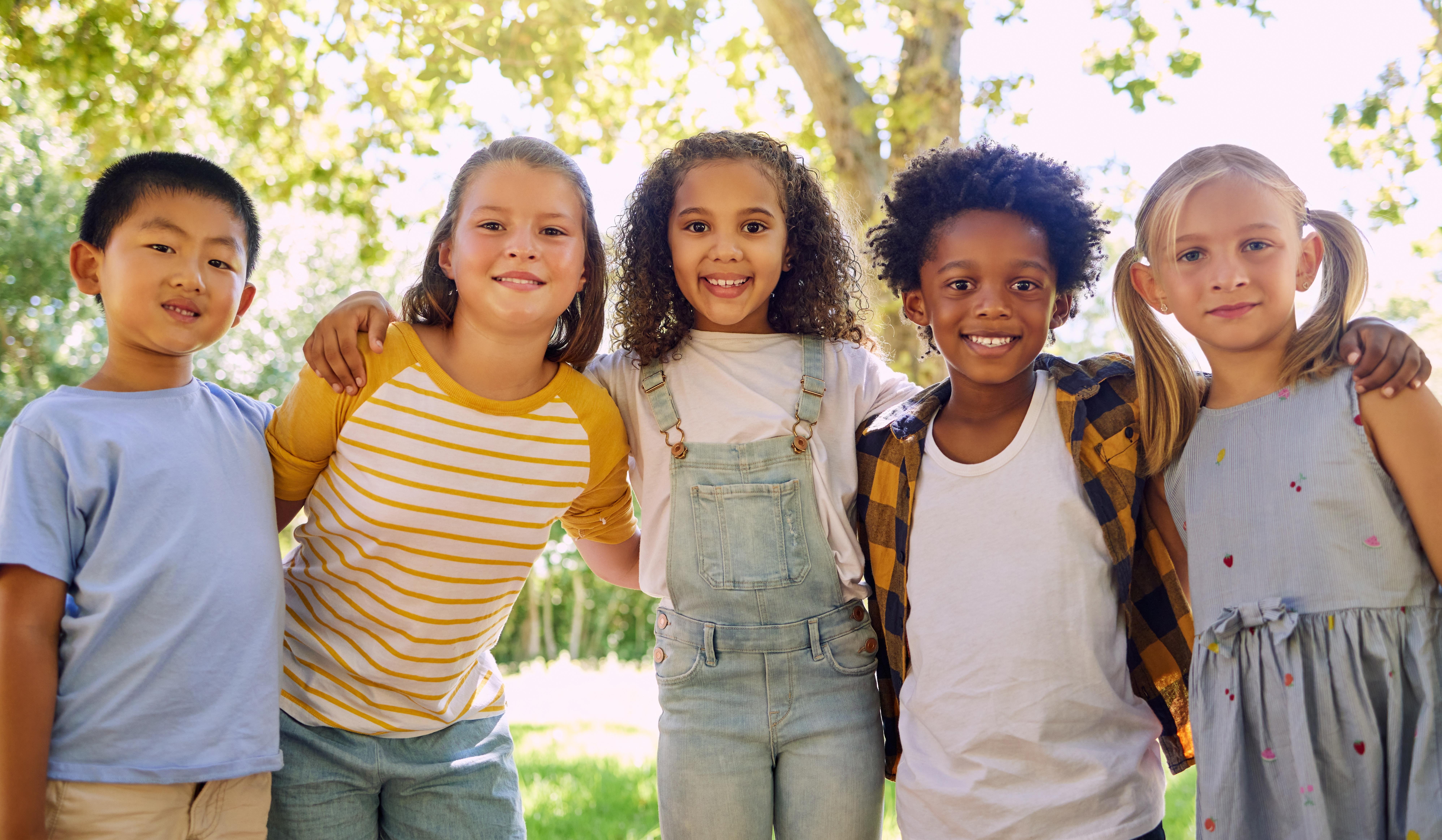
Social Emotional
gradesK-8 Visit our website for more content: https://www.consciouschildhood.org © Conscious Childhood 2023 Draw a traffic light on the board and in each circle write STOP, WAIT and GO 34
Take a moment to write about a time that you regret the way you reacted to a situation. Use the STOP – PAUSE – GO method to write about how you would respond to that today situation today. You can write in a mindfulness journal, writing paper or use lines below:


name:


our website for more content:
© Conscious Childhood 2023
Visit
https://www.ConsciousChildhood.org
Treasure Hunt grades2-8


FINDING COMMON GROUND
When children are very young, they are naturally curious about making new friends. Some, of course, are more confident than others. Teachers and parents should continue to encourage strong social interaction skills for all children. Try this fun activity for the whole class to explore new connections with each other.


Objectives:
- Students will understand we share more similarities than differences.
- Students will discover that by asking a few questions, they can find common ground with each other, regardless of sex, race, culture, social or economic situation.
Materials: A pencil or pen, a “treasure hunt” and worksheet (see attached)
Part 1: People are the greatest treasure
TEACHER / PARENT:
- Sometimes it is easy to know that you have something in common with a classmate. Perhaps you have been friends since you first started school. Maybe this is a person you met when you were playing your favorite sport outside of school. There are lots of ways we can meet people and make friends. But sometimes, if you ask just a few questions, you can find out that someone else in the class, who you do not know very well, might share a common interest, or a common trait. We are going to do a little task to discover more about our common ground with our classmates. I like to call it a ”Treasure Hunt” because in life, people, not things, are the greatest treasure.
- On this worksheet (teacher handout) are a list of questions.
1. Find students in the class who are matches for the question on the list
2. Then have the “matched student” sign their name next to the list question.
3. When you fill up all the matches with signatures, you can add up your score.
4. One point for every match (Extra point for a student that you do not know well).
Part 2: Reflection / Assessment:
- On the back of the worksheet, write about anything that surprised you. Was there someone in the class that you did not know well that matched a question?
- (For the younger grades) Teacher can write one or two questions on the board. The children can use a blank paper to gain signatures. Then they can draw a picture of themselves and the matched classmate.
TIP: Children who can not find a match for a question can be given special recognition for being unique . (( like a sticker)
Social Emotional
© Conscious Childhood 2023 Visit our website for more content: https://www.consciouschildhood.org 36
Treasure
Student Name: __________________________
This fun activity is designed for you to discover more about your common ground with your classmates. Common Ground means an experience, situation or interest that you have in common with someone else. This activity is called a “Treasure Hunt” discovering new friends, activities, culture and common interests with other people IS our life’s greatest treasure Havefunexploring!
Directions: Read each question.
1. Find students in the class who are matches for the question on the list
2. Then have the “matched student” sign their name under the list question.
Parent Tip: Try this activity at a family gathering or party
3. When you fill up all the matches with signatures, you can add up your score.
4. One point for every match (An extra point for a student that you do not know well).
What is your favorite pet? Who else has or loves the same kind of pet?
Answer:
Signature:
Points:
Have you travelled to another state or country? Who has been to the same place?
Answer:
Signature:
Points:
What is name of a funny movie that you saw? Who else enjoyed the same movie?
Answer:
Signature:
Points:
What is your favorite subject in school? Who else chooses this as their favorite?


Answer:
Write your own question here
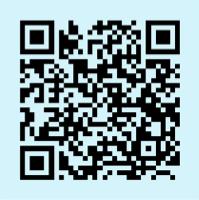
Answer:
Signature:
Signature:
Points:
You can make up your own questions here
Points: ?
Total Points:
Hunt
Visit our website for more content: https://www.consciouschildhood.org © Conscious Childhood 2023 37
Take a little time to reflect on this fun activity. Write about anything that surprised you. Was there someone in the class that you did not know well that matched a question? What did you learn from doing the Treasure Hunt? You can write in a mindfulness journal, writing paper or use lines below:


name:

© Conscious Childhood 2023
Visit our website for more content: https://www.ConsciousChildhood.org
Objectives:
- Students will e xperience senses and feelings through imagination
- Students will explore how a thought can create multiple feelings at the same time.
- Students will use a thesaurus to discover new feeling words
- Students will demonstrate with a facial expression a feeling; and then have a photograph taken. Then students will write a fictitious story about the events that led to the feelings expressed in that photo.
- Materials: A pencil, a photo of each student.
The Word Web Lesson on Page 26 is a great lesson to do prior to this activity.
Part 1: Having many feelings at the same time is a common experience. TEACHER / PARENT:
- Feelings allow us to experience all of our emotions. What is really amazing, is that every feeling that we have serves a very important purpose. Some joyful and exciting feelings give us energy and a sense of belonging. Other uncomfortable feelings might serve as sign posts telling us that we need to make a change or avoid something that is not serving us. There are no bad feelings or good feelings. All feelings are just a response to a thought or situation that we are experiencing right now. Today we are going to be curious and explore how we can have many feelings at the same time as a response to a thought or event.
- Choose a scenario from the list below.
• Something amazing just happened that you did not expect.
• There is a challenging situation that needs your attention.
• You are disappointed by some new information.
• You just realized that all your hard work has paid off.
• Your family takes you to a place that you have never been to before.
• It’s the end of a difficult time and everything looks good from here on.
• Somebody has just told you something that you find confusing.
• Something just happened that you absolutely did not want to happen.
- Make an facial expression that shows the feelings that you might have from this experience. (Teacher / Parent takes photo of child)
- Now write your own “make -believe” story about what happened and describe all of your feelings. Use a thesaurus to find some feeling words for your story.
see sample bulletin board
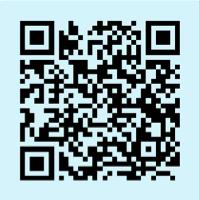

Bulletin
Board More than a Feeling grades2-6
Visit our website for more content: https://www.consciouschildhood.org 39 © Conscious Childhood 2023 Page 4 1
title:
Choose from the list of scenarios that your teacher has provided for you. Write your own “make-believe” story about what happened and describe all of your feelings. You can write in a mindfulness journal, writing paper or use lines below:

name:

Visit our website for more content: https://www.ConsciousChildhood.org © Conscious Childhood

2023
TIP: Invite children create and place additional feeling word stickers next to the photos showing multiple emotions.
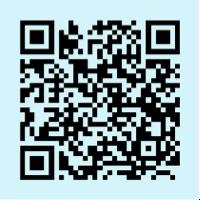
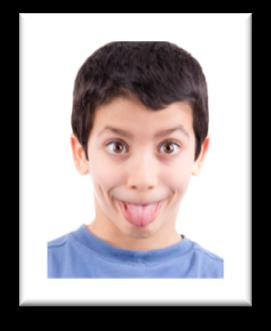
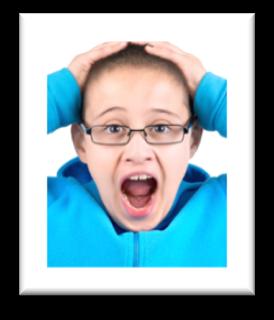


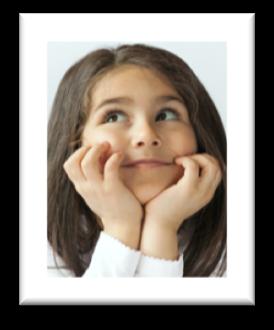
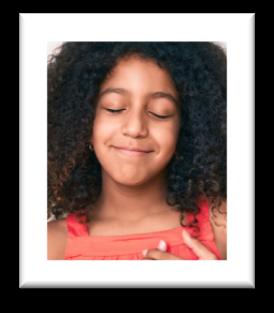
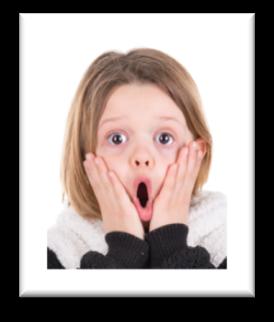
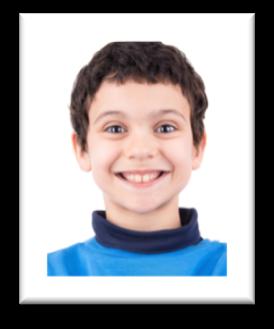
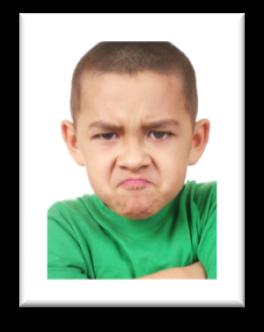
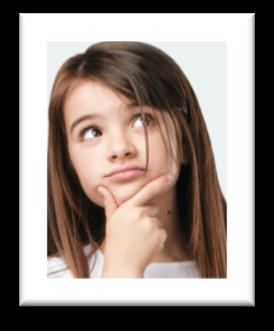
confident creative thrilled peaceful worried confused secure hurt betrayed inspired PARENT











More than a Feeling
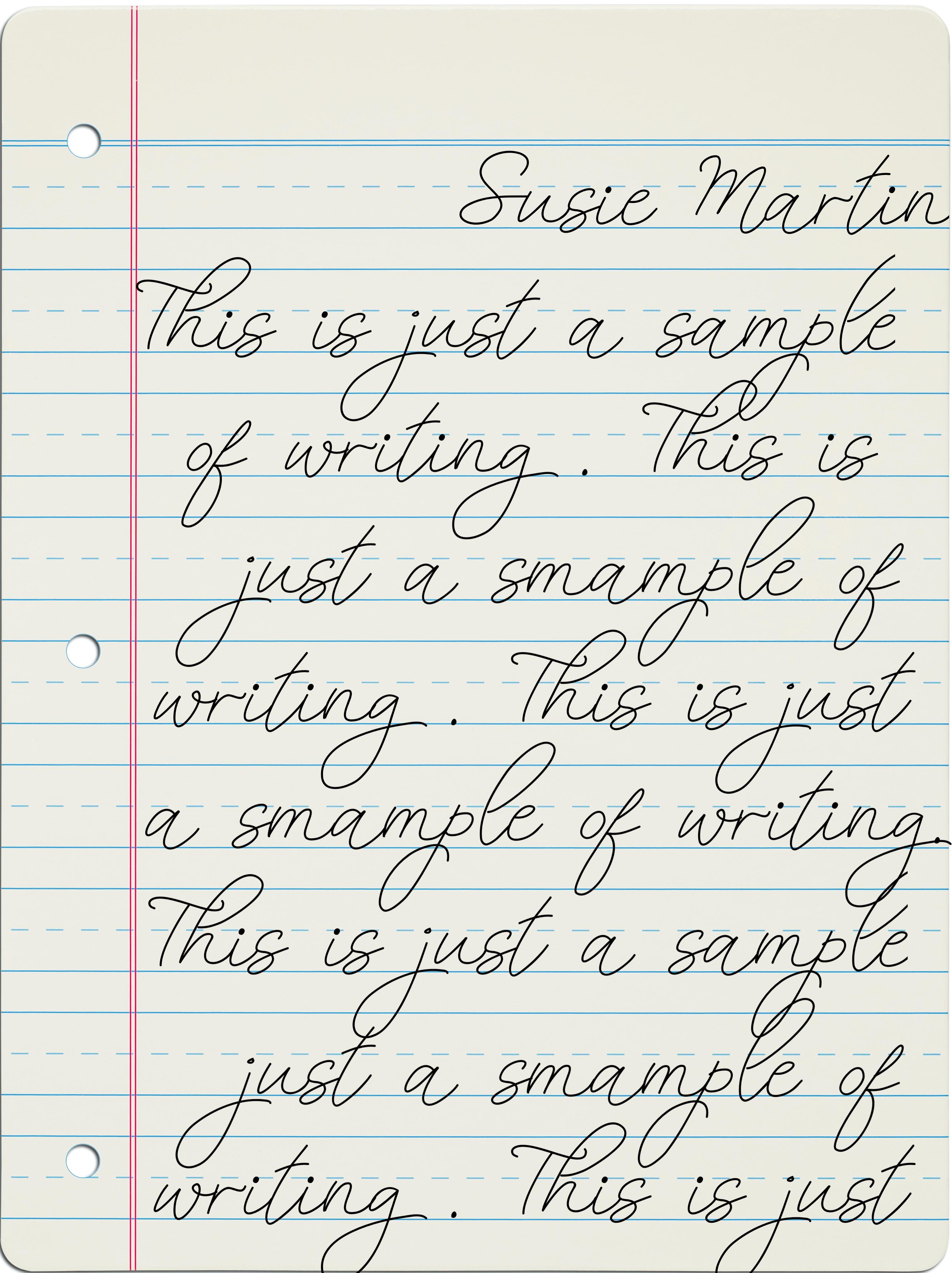









CURIOUS OPTIMISTIC FURIOUS SURPRISED SILLY DELIGHTED GRATEFUL ANXIOUS STUNNED UNSURE
TIP:
in
41 Visit our website for more content: https://www.consciouschildhood.org © Conscious Childhood 2023
Create a bulletin board
your child’s room or home to Display fun photos from family trips and events. Invite your child to write a few sentences describing how everyone was feeling.
Personal Growth Resources
A YEAR OF MINDFULNESS FOR BEGINNERS: Daily Mantras, Meditations and Prompts $13.00
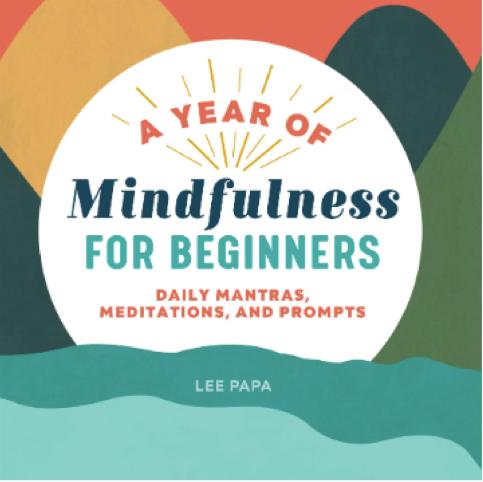 by Lee Papa
by Lee Papa
This is a perfect sized book that can easily fit in a handbag or car door pocket . Lee gives you a daily dose of thoughtful intentions, quotes and affirmations among other great insights. Why not pull this out when you are waiting in line instead of your phone! It’s a sweet little daily treasure.
Best Selling
A YEAR OF MINDFULNESS : 52-Week Guided Journal to Cultivate Peace and Presence
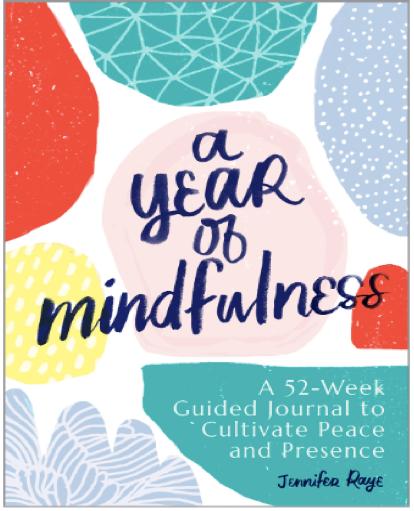
$12.00
by Jennifer Raye
A guided journal with weekly themes and 365 writing prompts, one for every day of the year. Create a mindfulness journey on a path to inner peace. Small bitesize pieces that you can fit in to any busy schedule.
NO-NONSENSE BUDDHISM FOR BEGINNERS : Answers to Burning Questions About Core Buddhist Teachings $11.00
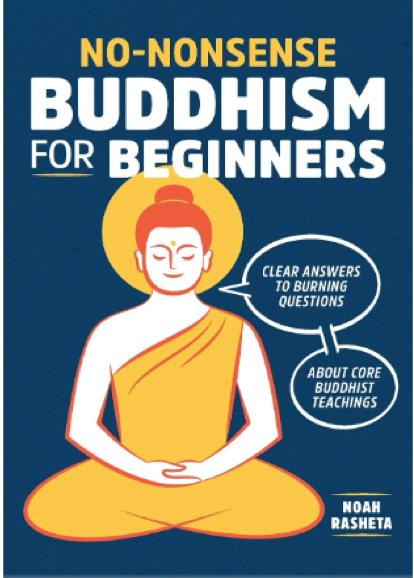
Also Available on Audiobook by Noah Rasheta
A beginners guide to gaining a fundamental understanding of Buddhism through straightforward Q&A’s and daily application.
Parents
LIVING UNTETHERED : Beyond the Human Predicament $15.00
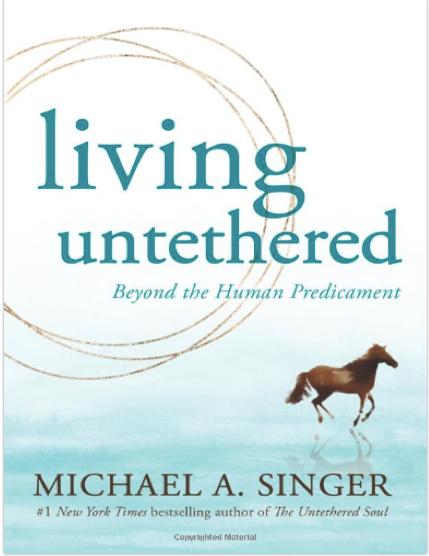
Also Available on Audiobook by Michael A. Singer
This book guides you to move beyond your thoughts, feelings and reactive behaviors that keep from true happiness and inspiration. Very clear and relatable. I highly recommended this book as a starting point for all
Religious
TOTAL MEDITATION : Stress Free Living Starts Here $17.00
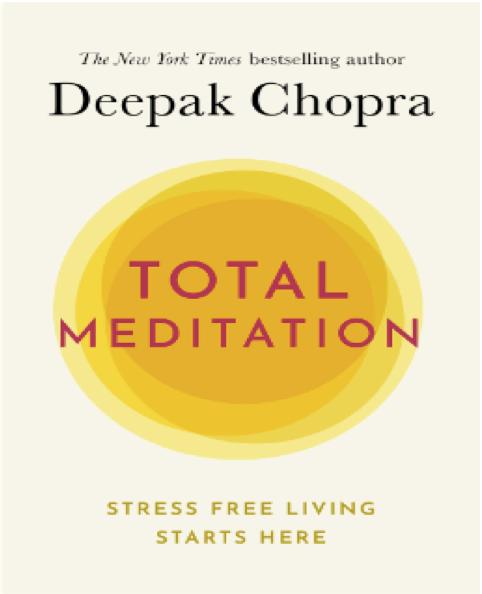
Also Available on Audiobook by Deepak Chopra
World renowned for bringing a modern approach to meditation, this is THE BOOK for teacher or parent burn-out. Deepak’s simple 7 day approach is life changing. Perfect for beginners and skeptics. Give it a try and you will be energized and motivated again.
THE AWAKENED FAMILY: A Revolution in Parenting $12.00 Also Available on Audiobook by Shefali Tsabary
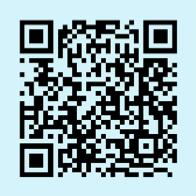
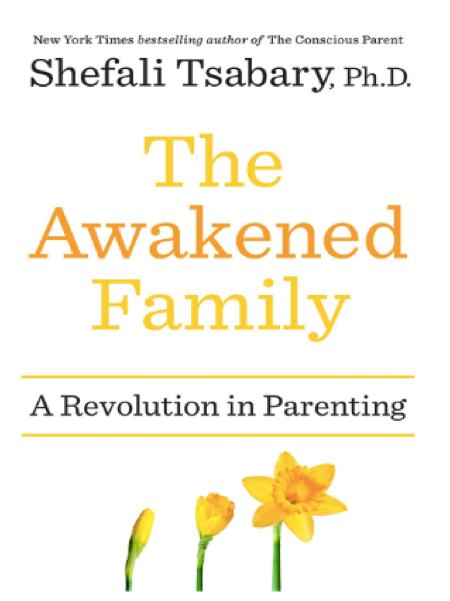 PhD
PhD
Take a journey with “Dr. Shefali” and relieve your fears and illusions about parenting. This is NOT your parent’s playbook! Discover your authentic power and become a conscious parent. You can put this step by step plan to work right now. The results are amazing.
PARENTING WITH PRESENCE: Practices for Raising Conscious, Confident, Caring Kids $11.00 Also Available on Audiobook by Susan Stiffelman,
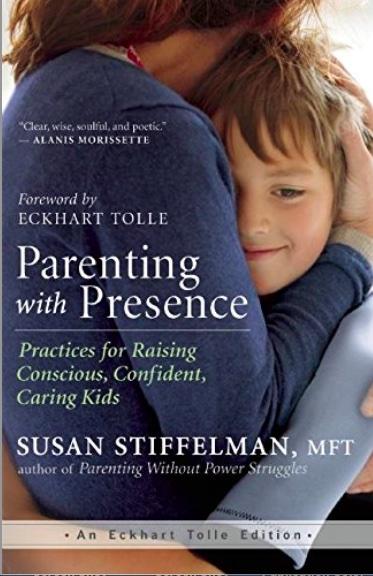 MFT
MFT
The author shares case studies from her clinical work as a therapist and offers practical advice to parents who want to raise conscious children but are stuck in old familiar patterns that just don’t seem to work anymore. A easy transition for parents who are just starting their conscious journey.
THE UNIVERSAL CHRIST: How a Forgotten Reality Can Change Everything We See, Hope for and Believe $15.00
Also Available on Audiobook by Fr. Richard Rohr
This is an excellent read for anyone who has found confusion in the Christian faith. Fr. Rohr reminds us that the Christ is everywhere and not just in people, in fact divinity dwells in Creation itself. That means no one and no thing is excluded from Loving Presence.

for teachers & parents Best Selling
42 Visit our website for more content: https://www.consciouschildhood.org © Conscious Childhood 2023 FOR A FULL DESCRIPTION WITH BUYING OPTIONS Click on Our Website
Framework
The Conscious Childhood Goals
CONTENT FOCUSES ON CREATIVE, MINDFUL, SOCIAL & EMOTIONAL LEARNING
CHILDREN CULTIVATE A SENSE OF AGENCY OVER DEVELOPMENT & LEARNING SKILLS EDUCATORS & PARENTS FACILITATE LEARNING BY SUPPORTING & MODELING
The CASEL 5 Core Competencies *
SELF-AWARENESS: Children have the ability to understand their own emotions, thoughts, and values and behaviors with a growth mindset and a well-grounded sense of confidence and purpose.
SELF-MANAGEMENT: Children have the ability to manage their own emotions, thoughts, and behaviors effectively in different situations, manage stress and feel motivated to achieve goals.
SOCIAL AWARENESS: Children have the ability to understand the perspectives of and empathize with others, identify social norms, including those from diverse backgrounds, cultures, & contexts.
RELATIONSHIP SKILLS: Children have the ability to establish and maintain healthy and supportive relationships, communicate effectively, cooperate and collaborate with diverse individuals & groups.
RESPONSIBLE DECISION MAKING: Children have the ability to make caring and constructive choices & identify solutions about personal behavior, social interactions and community well-being.
InIssue This
The lessons and activities in the Conscious Childhood Resources include outcomes that support THE CASEL 5 Core Competencies addressing five broad and interrelated areas of competence.

For more information please visit: https://www.casel.org/fundamentals-of-sel/
Lessons & Learning Outcomes
Experience senses and feelings through imagination
Identify thoughts and link them to feelings
SELF-AWARENESS SELF-MANGEMENT
SELF-AWARENESS SELF-MANGEMENT RELATIONSHIP SKILLS
Experiencing self-efficacy
Use stress management strategies like breathing techniques Follow a series of steps in an instruction
Develop an awareness of body sensations by directing focus
Identify and use stress management strategies like body focus
Demonstrate creativity and courage while taking initiative Plan and collaborate with a partner
Witness thoughts and link them to familiar emotions
Create new thoughts through imaginary sense perception
SELF-AWARENESS SELF-MANGEMENT
SELF-AWARENESS SELF-MANGEMENT RESPONSIBLE DECISIONS SOCIAL AWARENESS RELATIONSHIP SKILLS
SELF-AWARENESS SELF-MANGEMENT
Express gratitude and develop a growth mindset
Establish a daily reflection and journaling practice
Identify and use stress management strategies
Cultivate agency for problem solving
Witness thoughts and link them to familiar emotions
Identify and use stress management strategies like pausing
Regulate emotions and control impulsive reactions
Anticipate consequences for one’s actions, evaluate options
Create positive friendships through curiosity and an open mind
Demonstrate courage when approaching something unfamiliar
Experience senses and feelings through imagination
Witness thoughts and link them to familiar emotions
Communicate & express ideas clearly
Communicate & express ideas clearly We invite you to join our community SIGN

Name of Lesson Gr Pg. Core Competencies Learning Outcome Hot Cocoa K-8 12 In Bloom 3-8 13 Clouds Float By 6-8 16 Sun Salutations K-8 18 Creative Characters K-8 20 A Place for Me K-8 21 Wrapping Up the Week 3-8 20 Check My Thoughts 6-8 23 Take a Pause K-8 26 Feelings Word Web 3-8 27 Treasure Hunt 2-8 28
Than a Feeling 2-6 30 *
More
UP for our newsletter
FREE MONTHLY LESSON downloads
with
} } } } }
} © Conscious Childhood 2023 Visit our website for more content: https://www.consciouschildhood.org
Adyashanti, (2019). The 30 - Day Wake Up Challenge: A Direct Way to Spiritual Liberation, Audiobook. Boulder, CO: Sounds True, Inc.
Austin, LCSW - C, Katie (2019). Mindfulness for Kids Who Worry: Calming Exercises to Overcome Anxiety. Emeryville, CA: Rockridge Press.
Bersma, Danielle and Visscher, Marjoke (2003). Yoga Games for Children: Fun and Fitness with Postures, Movements and Breath. Alameda, CA: Hunter House
Bixby, Linette (2020). Mindfulness Workbook for Teens: Exercises and Tools to Handle Stress, Find Focus, and Thrive. Emeryville, CA: Rockridge Press.
Broderick, PhD., Patricia C (2021). Learning to Breathe: A Mindfulness Curriculum for Adolescents to Cultivate Emotional Regulation, Attention, and Performance. Oakland, CA: New Harbinger Publications.

Brown, Brene (2021). Atlas of the Heart: Mapping Meaningful Connection and the Language of Human Experience. New York, NY: Random House.
David, PhD, Susan (2016). Emotional Agility: Get Unstuck, Embrace Change and Thrive in Work and Life. New York, NY: Avery.
Hinder, Sarah Jane (2019). Hello, Sun!: A Yoga Sun Salutation to Start Your Day. Boulder, CO: Sounds True, Inc.

Krause, Caitlin (2019). Mindful By Design: A Practical Guide for Cultivating Aware, Advancing, and Authentic Learning Experiences. Thousand Oaks, CA: Corwin
Tolle, Eckhart (2005). A New Earth: Awakening to Your Life’s Purpose. New York, NY: Penguin Life.
Tolle, Eckhart (1999). The Power of Now: A Guide to Spiritual Enlightenment. Novato, CA: New World Library.
Singer, Michael (2022). Living Untethered: Beyond the Human Predicament. Oakland, CA: New Harbinger Publications.
Singer, Michael (2013). The Untethered Soul: The Journey Beyond Yourself. Oakland, CA: New Harbinger Publications.
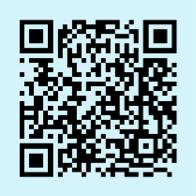
References Find these publications, books and other on our website © Conscious Childhood 2023 Visit our website for more content: https://www.consciouschildhood.org












 Mary Doherty is a veteran teacher for over 20 years. She is a writer of academic lesson planning, SEL and mindfulness curriculum for a new generation of school children
Mary Doherty is a veteran teacher for over 20 years. She is a writer of academic lesson planning, SEL and mindfulness curriculum for a new generation of school children












 by Christopher Willard and Wendy O’Leary
by Christopher Willard and Wendy O’Leary


 by Nicole Cardoza
by Nicole Cardoza





 By Carolyn Kanjuro
By Carolyn Kanjuro

 by Dana Mayho Taylor
by Dana Mayho Taylor
 by Jennie Marie Battistin MA LMFT
by Jennie Marie Battistin MA LMFT

 by Nicole Libon PhD
by Nicole Libon PhD









 Libon PhD
Libon PhD



































 By Carolyn Kanjuro
By Carolyn Kanjuro





























































 by Lee Papa
by Lee Papa





 PhD
PhD
 MFT
MFT




